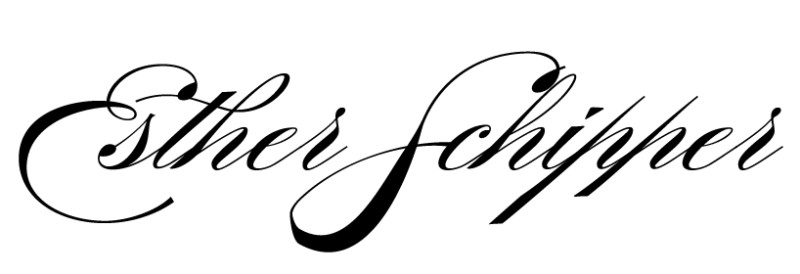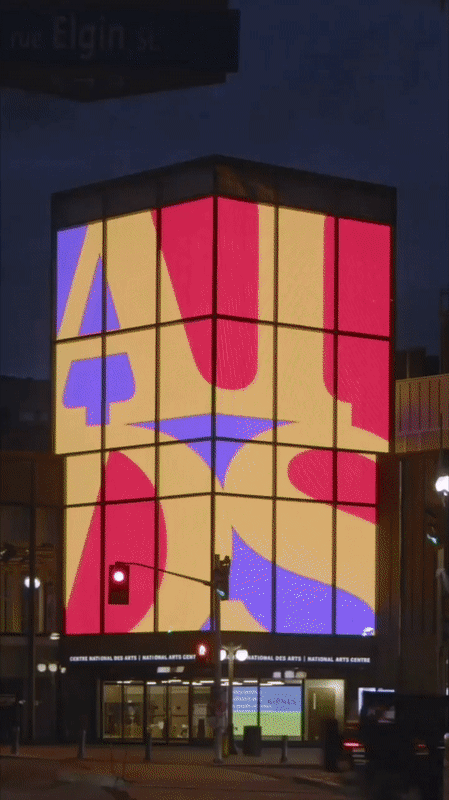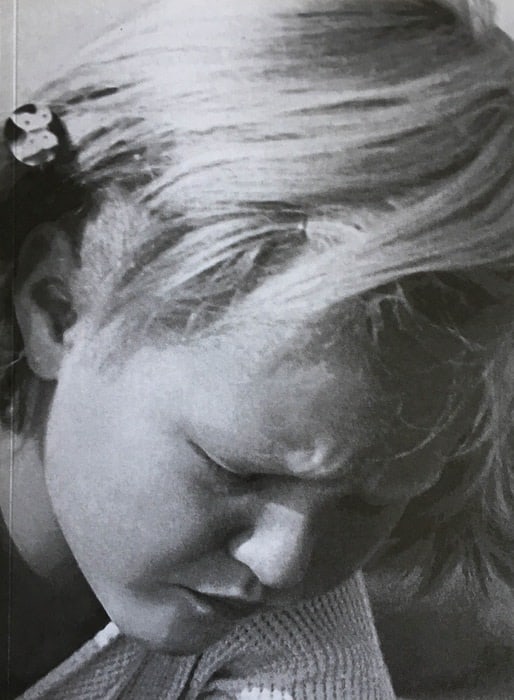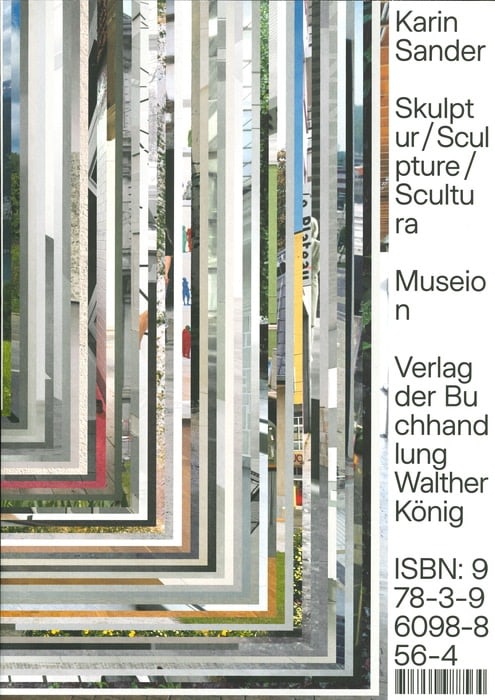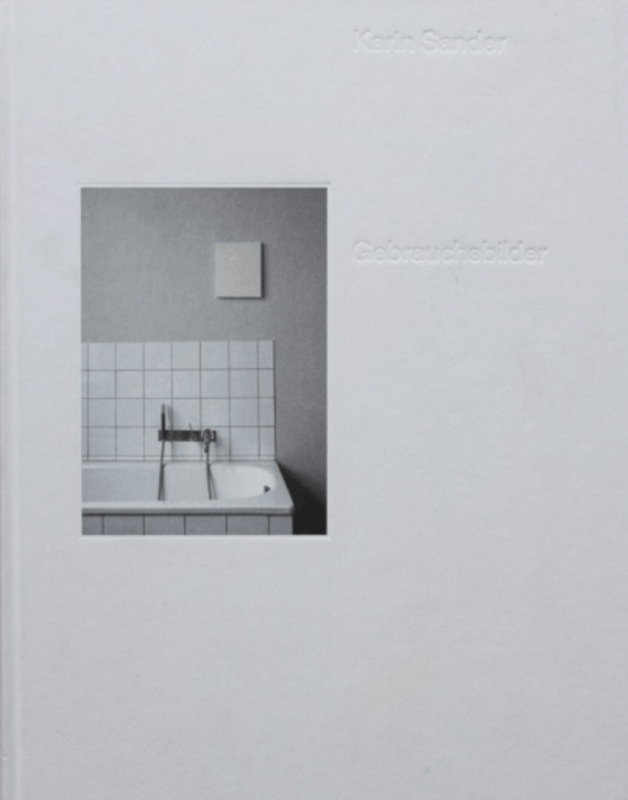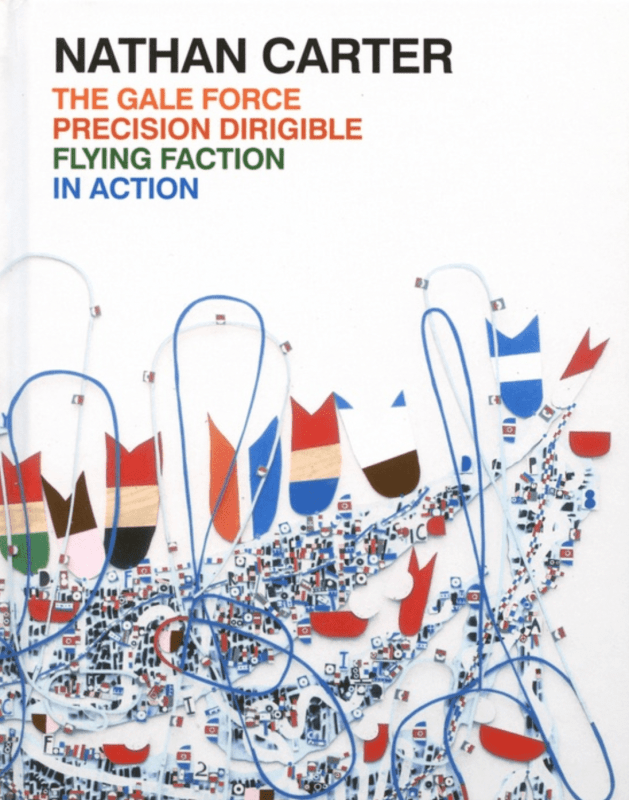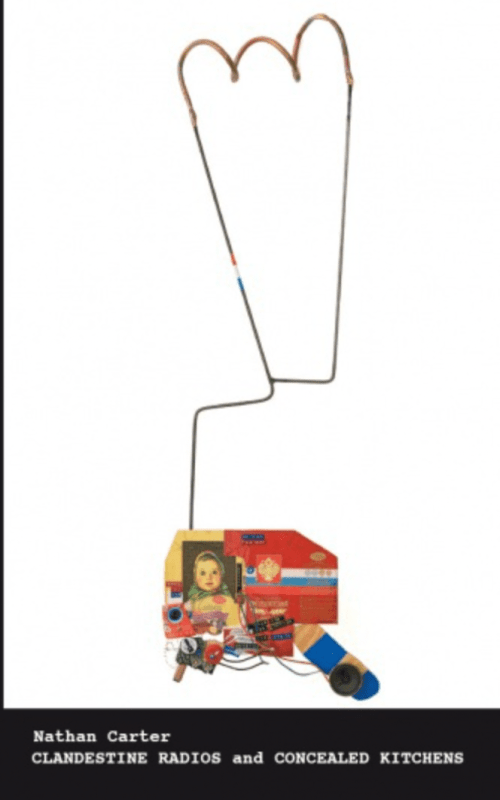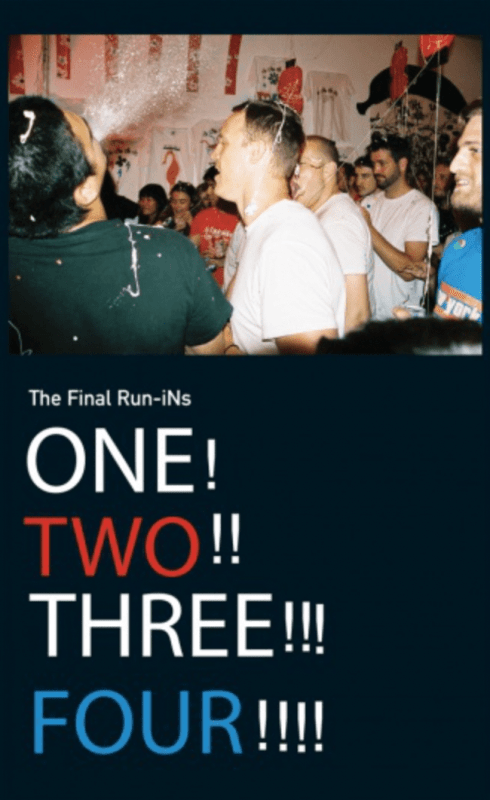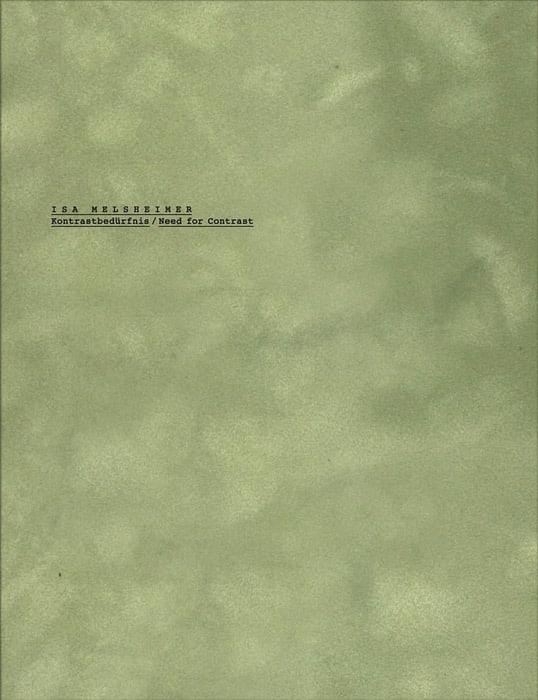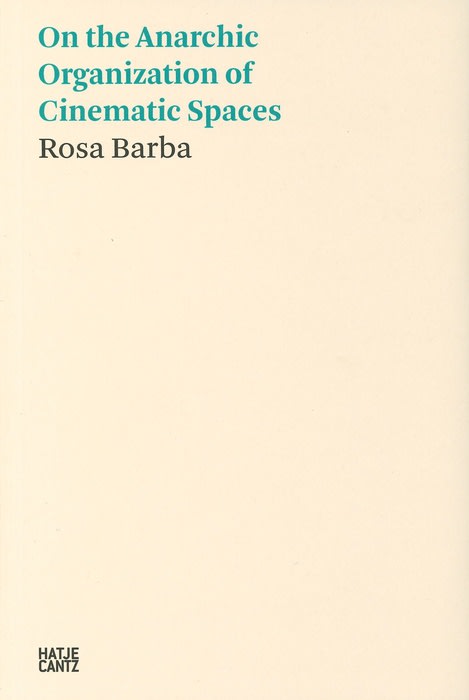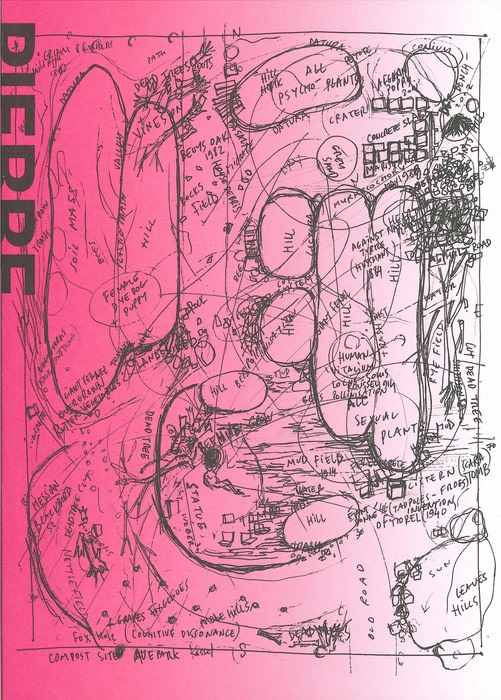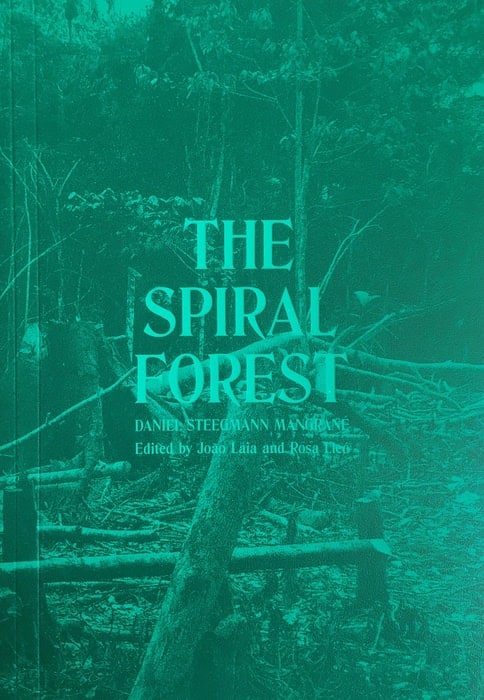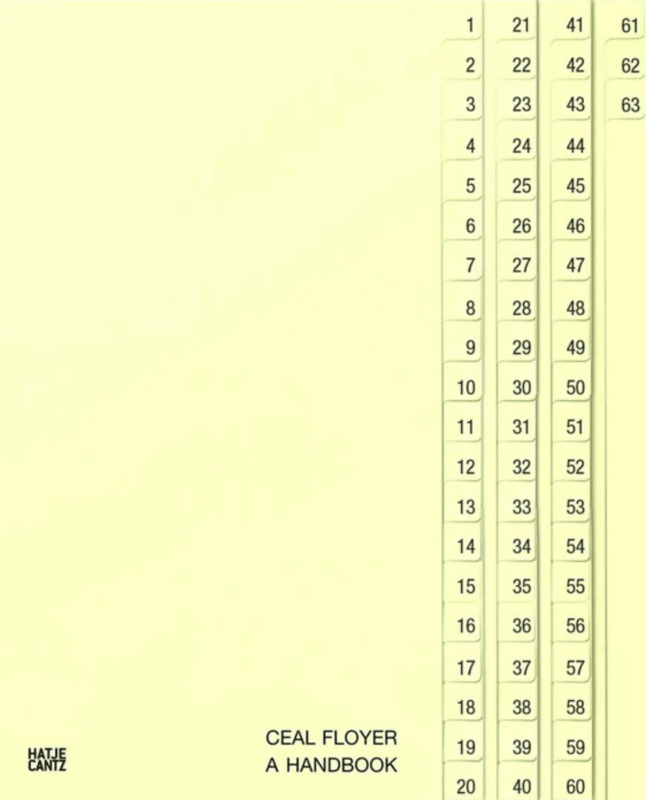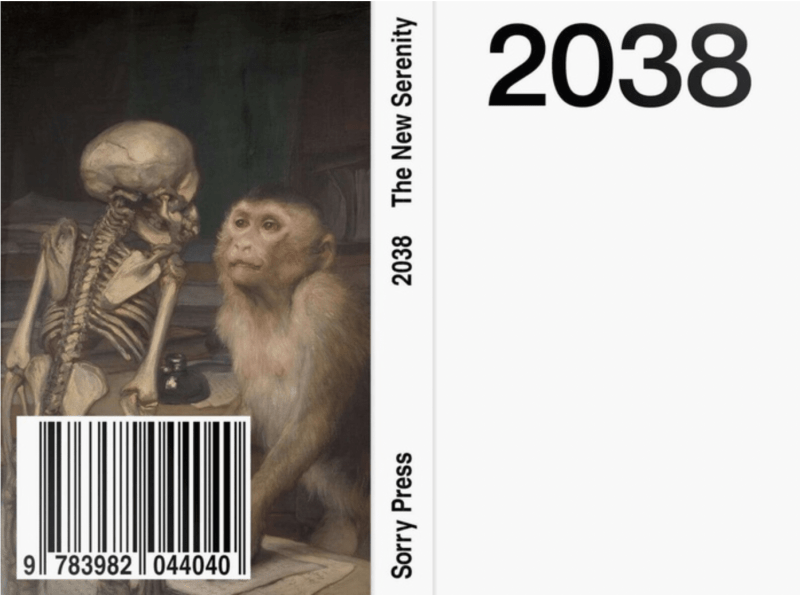Willkommen: Hier finden Sie die deutsche Fassung des Briefes aus Berlin
Welcome to the Letter from Berlin! This month we take a look at Karin Sander's exhibition, Nathan Carter's sculptures and his series of photographs portraying MARS The Goddess of Sex and Death. Take a look at Carter's 2016 film The DRAMASTICS Are Loud! It can be screened online for a limited time. Please join us at Art Basel! We present highlights from the booth below. This is the last weekend to see Isa Melsheimer's exhibition at the Centre international d'art et du paysage on Vassière Island, one hour west of Limoges. In Ottawa a comprehensive exhibition on the work of General Idea opened in early June, we present the extensive online material the National Gallery of Canada has assembled. Pierre Huyghe's site-specific work was unveiled at Kistefos in Norway last weekend. At Berlin's Hamburger Bahnhof a group exhibition of recent acquisitions includes several works by Daniel Steegmann Mangrané and by Ceal Floyer. And, finally, next week Christopher Roth's feature film Servus Papa, See you in Hell, will premiere at the Filmfest München. We hope you enjoy our Letter from Berlin!
|
|
|
Karin Sander
"What You See is Not What You Get" (22 Exhibitions)
|
|
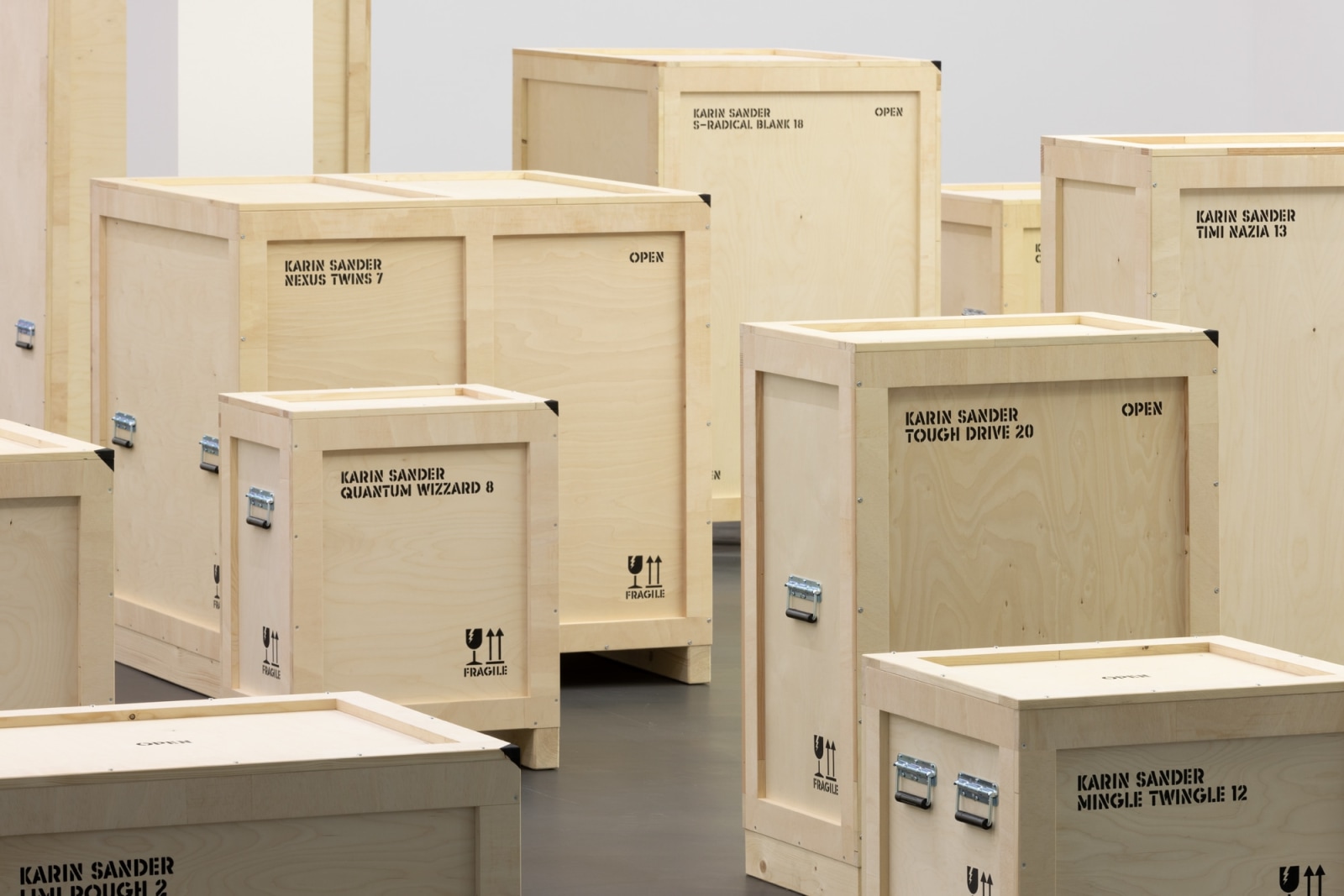
| Exhibition view: Karin Sander, “What you see is not what you get” (22 exhibitions), Esther Schipper, Berlin, 2022. © Karin Sander / VG Bild-Kunst, Bonn 2022. Photo © Andrea Rossetti
| |
|
For this solo exhibition entitled "What you see is not what you get", Karin Sander has gathered different works from her oeuvre and from these she has curated 22 exhibitions. Karin Sander has carefully packed these particular, individual selections into transport crates and then closed them; the crates offer protection and sometimes contain instructions regarding the various, small- and large-format art works they hold. The exhibits are well kept in their transport crates, present in the gallery space but eluding visibility. Each transport box has its own size, bears its unique title, lists the materials used in the works, and contains what goes with the installation of the works and the respective exhibition.
|
|
|
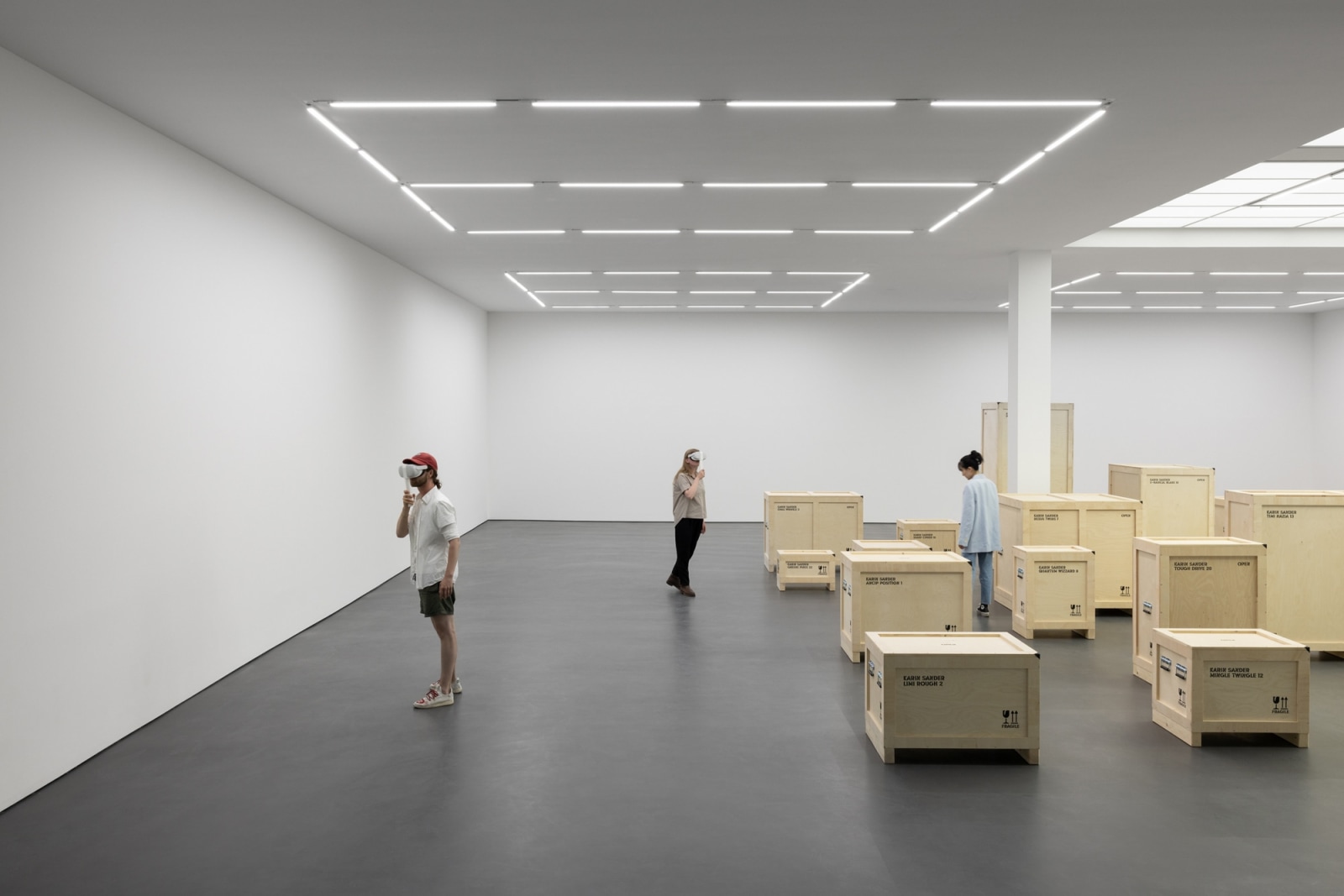
| Exhibition view: Karin Sander, “What you see is not what you get” (22 exhibitions), Esther Schipper, Berlin, 2022. © Karin Sander / VG Bild-Kunst, Bonn 2022. Photo © Andrea Rossetti
| |
|
The tension between visibility and presence is also a motif of the new augmented reality exhibitions conceived by Karin Sander. Visitors can use VR glasses to visit other exhibitions in the gallery virtually. For this piece, she had works 3D scanned and virtually installed on the walls. This visible, albeit AR, presentation provides a counterpoint to the 22 physically present exhibitions - it lets visitors see works that are not physically present, while the works in the shipping crates are present but not visible. Thus, visual information meets augmented reality, the narrative of physical and conceptual content superimposed on the presence of augmented reality: "What you see is not what you get."
|
|
|
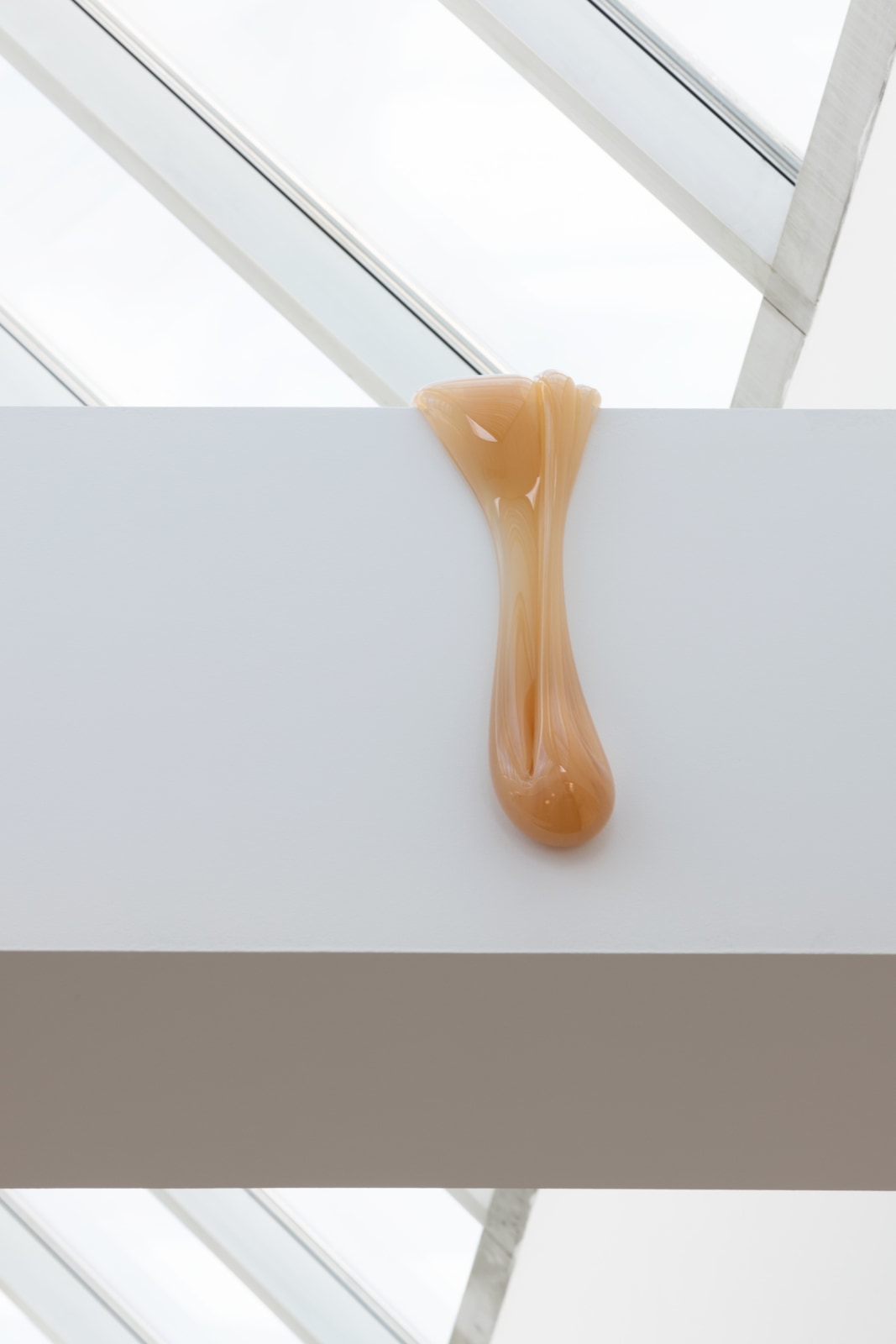
| Karin Sander, Glass Piece 86, 2022, glass, 43,5 x 16,5 x 13 cm.
© Karin Sander / VG Bild-Kunst, Bonn 2022. Photo © Andrea Rossetti | |
|
A work from Karin Sander's series of Glass Pieces is installed in the entrance area. This work belongs to a series made of liquid glass spread out on a surface, which slowly welled over its edges until it solidified into drop-shaped offshoots. In some cases, the glass was poured over the edge of a table, flowing down while it solidified in contact with air. In other cases, Karin Sander folded layers of high-temperature glass, imprisoning the still fluid material inside half-congealed glass. |
|
|
Nathan Carter
Silky-way Sylvan Slip-throughs Serrated Sub-space Side-winders and Countess Von Venomous’ Private Pearl Position
|
|
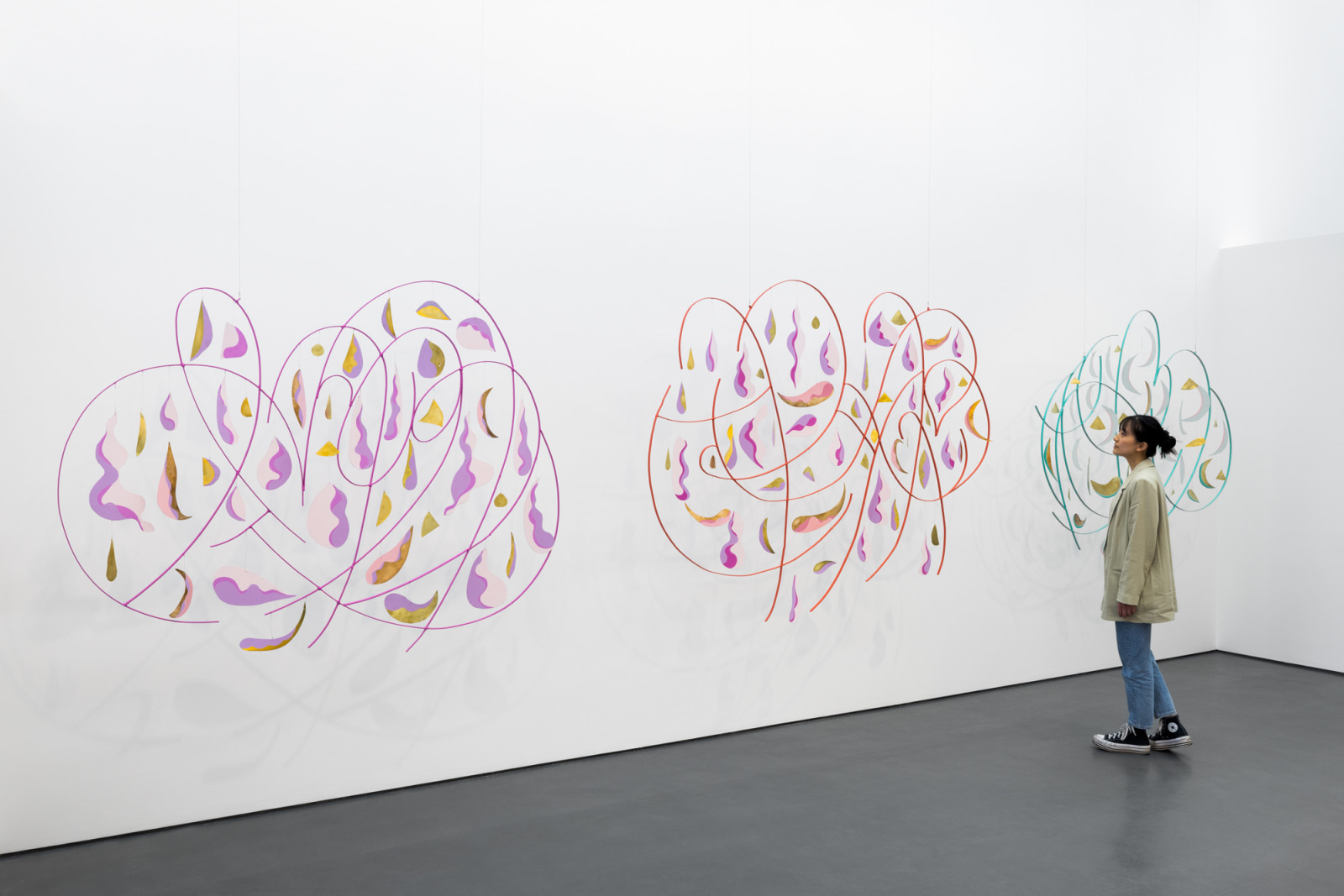
| Exhibition view: Nathan Carter, Silky-way Sylvan Slip-throughs Serrated Sub-space Side-winders and Countess Von Venomous’ Private Pearl Position, Esther Schipper, Berlin, 2022. Photo © Andrea Rossetti | |
|
We must never think of forms, in their different states, as simply suspended in some remote, abstract zone, above the earth and above man. They mingle with life, whence they come; they translate into space certain movements of the mind.
—Henri Focillon, The Life of Forms in Art, 1934.
Nathan Carter is known for creating fictional worlds. His objects, images and titles fuse elements of storytelling, the visual language of surrealist erotic illustration, cartography, celestial navigation charts, subversive music, outsider subcultures and the history of abstraction in order to make maps and fluid atmospheric landscapes that serve as sculptural way-finding diagrams leading to intentional communities.
|
|
|
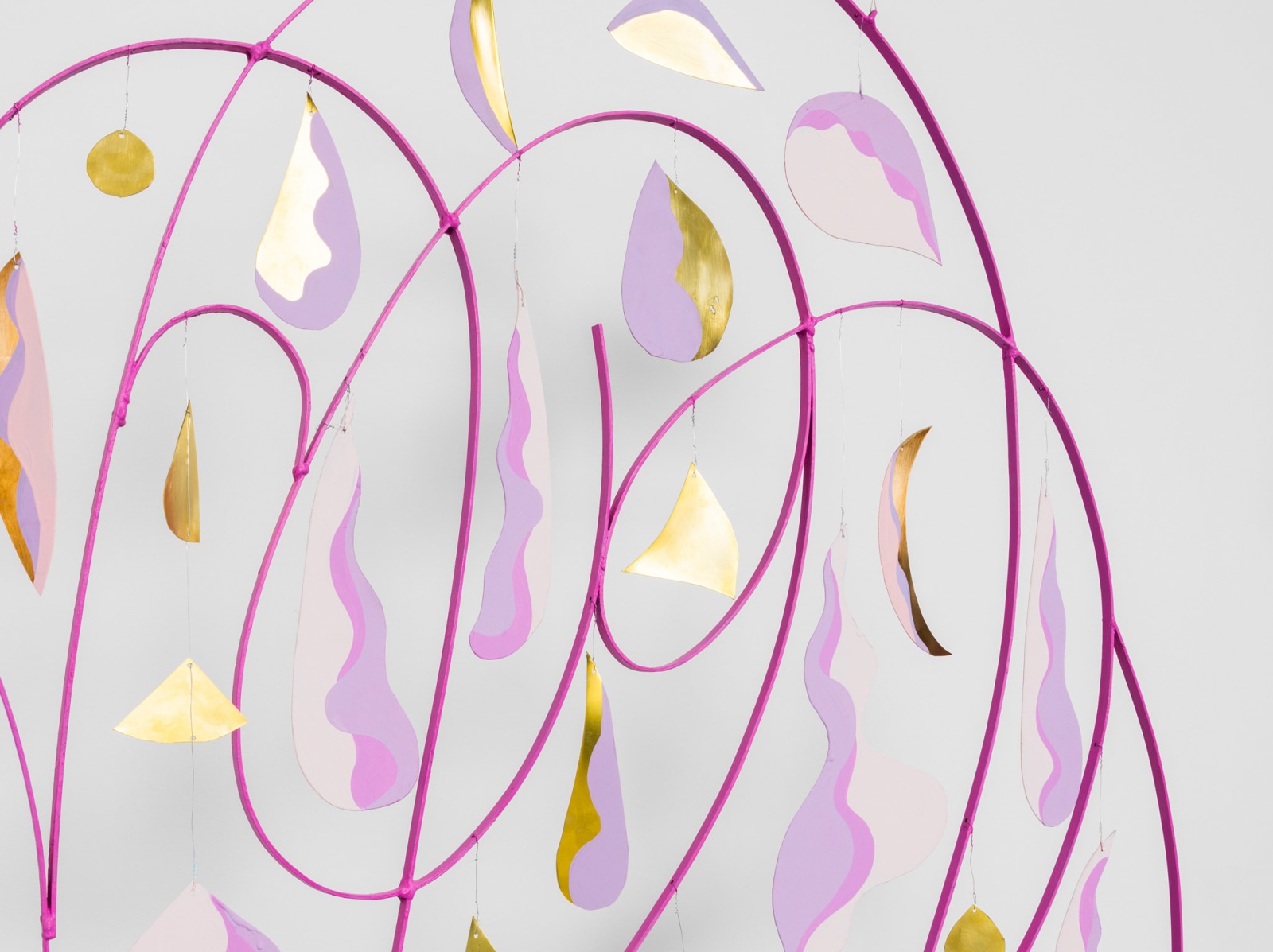
| Nathan Carter, The Countess von Venemous revealed her Lipstick Lavender slip in the haunted ethereal Nymphaeum, 2022 (detail), steel, brass, bronze, aluminum, stainless steel wire, acrylic enamel paint, 150 x 190 x 1,5 cm.
Exhibition view: Nathan Carter, Silky-way Sylvan Slip-throughs Serrated Sub-space Side-winders and Countess Von Venomous’ Private Pearl Position, Esther Schipper, Berlin, 2022. Photo © Andrea Rossetti
| |
|
Suspended from the ceiling, the three new sculptural works playfully combine delicate linear elements and a multitude of suspended whimsical, soft abstract shapes. This new body of works focuses on a formal language of shapes and symbols that allude to feminine anatomy, floral forms and colors but with dangerously sharp edges that serve as a self-defense mechanism. Continuing his characteristic DIY aesthetic, the small cut-outs are hand painted and their rounded shapes dangle mobile-like from fine metal wires. To the artist, his forms evoke atmospheric locations where mysterious figures, forces of benevolence, enchantment and mischief oppose tyranny.
The titles of Carter’s were always laying a trail of breadcrumbs to a larger narrative; those of his new sculptures—with their femme curves and street shrapnel, serrated edges as security against dream killers—provide a glossary that imbues his new language of forms with highly-charged emotional content and symbolic associations that refer to the driving force of his contemporary work: self-invention.
|
|
|
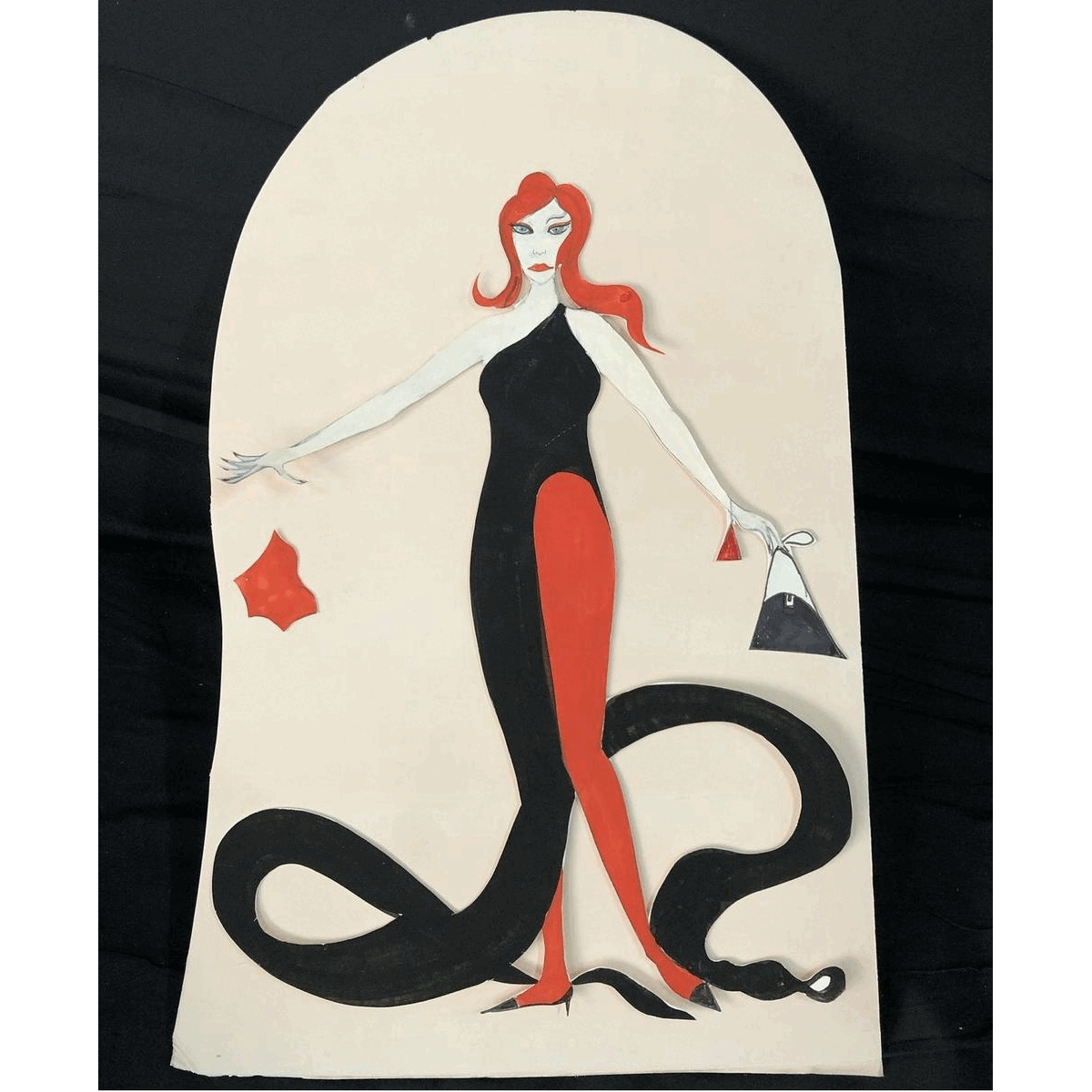
| Artworks and images © Nathan Carter (Mars); © Jörg von Bruchhausen
| |
|
A notion explored in his two films THE DRAMASTICS ARE LOUD, 2016, and LA GNARLIES, 2021, the question of expressing one’s true identity is the subject of the artist’s collaborative series of images conjuring MARS The Goddess of Sex and Death as she explores her trans-identity. Nathan Carter is MARS. Collaborating with Dan Estabrook and Mercedes Jelinek, the artist conjures and channels her as “the woman I want to be” in séance-like photo sessions.
MARS The goddess of Sex and Death struts in her high stilettos with spiky pointed tips and a warning message on their heels. She looks over her shoulder, glaring behind her untidy black hair, challenging the viewer. She is a hot mess, her clothing witchy and decaying, more like a sculpture. Impatient, she may stamp her foot and lash out. MARS is full of attitude and not interested in what we think about her. MARS will not play object to our gaze. Both amorous and dangerous, her motto might be summarized as “yes…but no!”
|
|
|
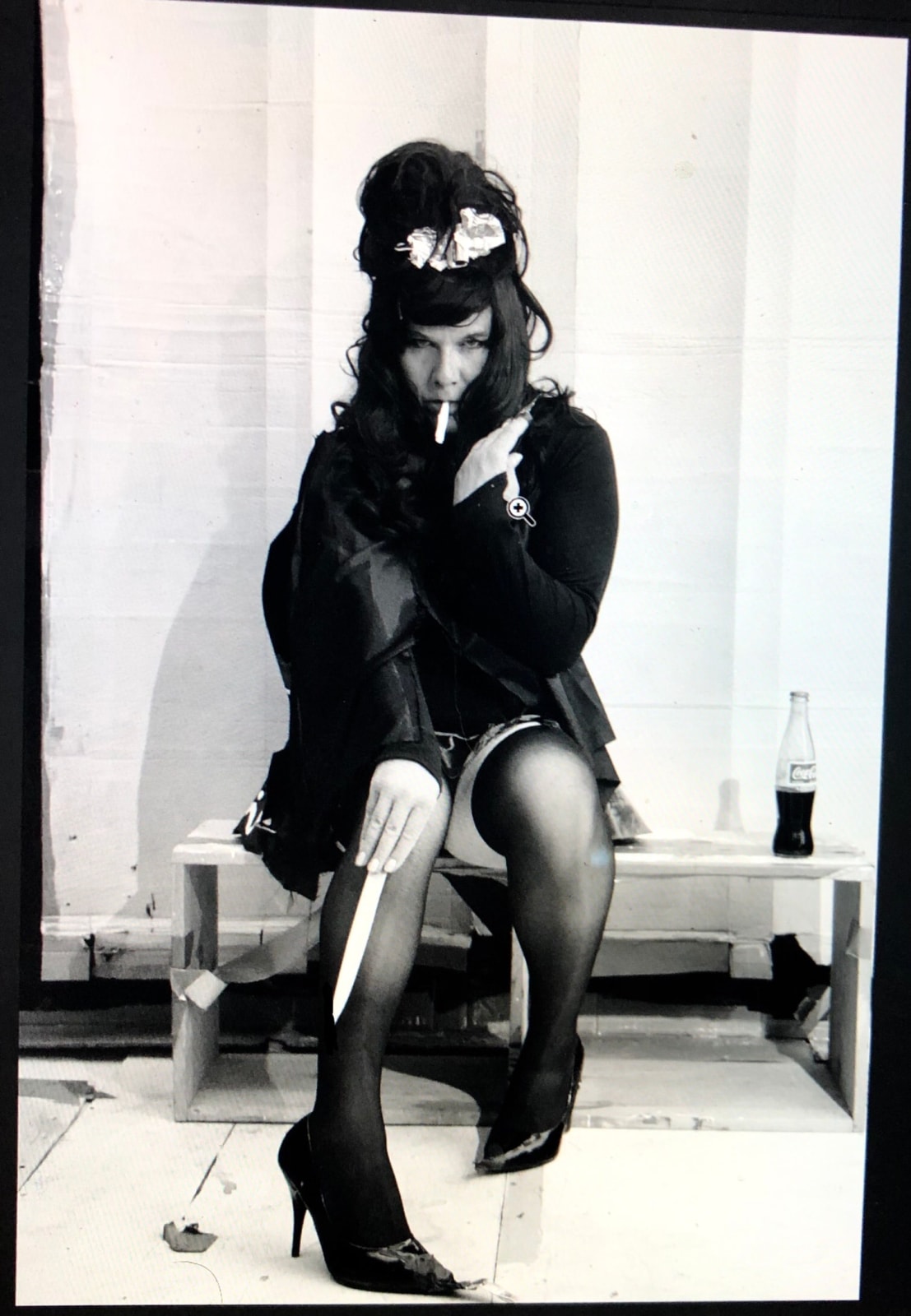
| Photo © Nathan Carter (Mars) | |
|
Endowed with a set of recurring markers—a large disheveled wig, batwing eyes, spiky fingernails, fishnet stockings, short skirts, stiletto heels, a silver skull and cross bones emblazoned on her black cape—MARS’ representations draw on a wide-range of historical imagery: Weimar erotica, Cecil Beaton or Mme Yevonde 1920s portraits of British aristocrats, Parisian trans women photographed in the 1960s by Swedish photographer Christer Strömholm, surrealist-inspired pornography by Pierre Molinier or Carlo Mollino, images of 1980s intentional communities, among them skaters, surfers, and postpunk bands.
MARS may be out for retribution but there is a deliberate vulnerability in her portrayal as well. For an artist, this kind of vulnerability is familiar: exhibiting a new body of work is always fraught with risk. It is not only the judgement of others but the artists’ own new distance, seeing a work in public for the first time, that can make exhibiting feel perilous. Yet, for Carter the hazardousness extends to the very language of forms: If every shape is a reminder of having been denied the vocabulary of female adornment in the past, then every work's curve, color and flourish becomes a subversive, revelatory act, a claim on self-determination in the artist's exploration of trans identity.
—Isabelle Moffat |
|
|
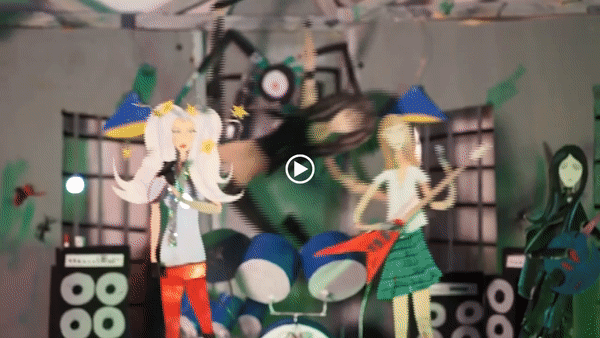
| Film: Nathan Carter, The DRAMASTICS are Loud, 2016, HD Film (colour, sound), duration 27:25 min | |
|
Exclusive limited-time online screening: The DRAMASTICS Are Loud, 2016
If MARS is “the woman the artist might want to be,” the fictional bands of women Nathan Carter has created and immortalized in his DIY-aesthetic films, were “the bands he wanted to be in.” The point of departure for his 2016 film, The DRAMASTICS Are Loud, for example, was a series of figures he wanted to activate. Carter conceived the story, designed the characters, their clothes, all the props and sets, as well as creating entire streetscapes. The film follows four young women who found a fictional punk band, emerge from obscurity, perform a few shows, and become victims of their own brief success. The hand-held cut-out figures, animated with visible wires, have a surprising dynamism. The soundtrack features dialogue, sound effects, and music, performed by Carter and a number of collaborators and friends. The production of the film took on a festive quality, accentuating a communal aspect long present in his work.
|
|
|
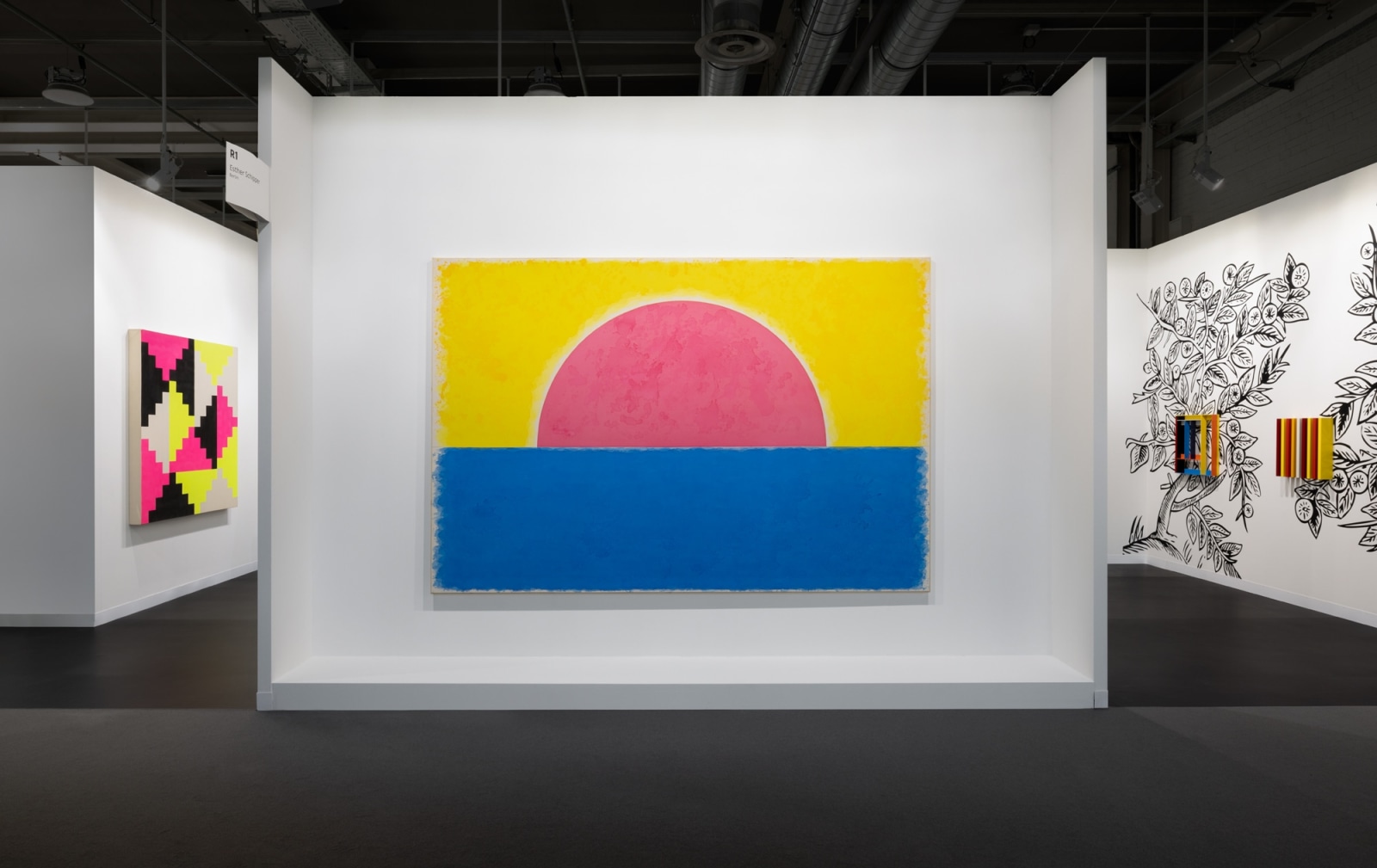
| Booth view with works by General Idea, Ugo Rondinone and Liam Gillick. Art Basel 2022. Photo © Andrea Rossetti
| |
|
Art Basel 2022 Hall 2.1 Booth R1 Messe Basel Messeplatz 10 4058, Basel Through June 19, 2022 www.artbasel.comWe hope you can join us at Art Basel which will continue through June 19th. You can find us in Hall 2.1 at Booth R1 where we present works by Rosa Barba, Martin Boyce, Matti Braun, Angela Bulloch, Sarah Buckner, Etienne Chambaud, Simon Fujiwara, Ryan Gander, General Idea, Liam Gillick, Rodney Graham, Ann Veronica Janssens, Gabriel Kuri, Jac Leirner, Liu Ye, Roman Ondak, Philippe Parreno, Sojourner Truth Parsons, Ugo Rondinone, Karin Sander and Julia Scher.If you wish to receive a dossier, or should you have any questions about our presentation at Art Basel 2022, please contact Marek Obara: obara@estherschipper.comBelow a selection of highlights presented at our Art Basel booth.
|
|
|
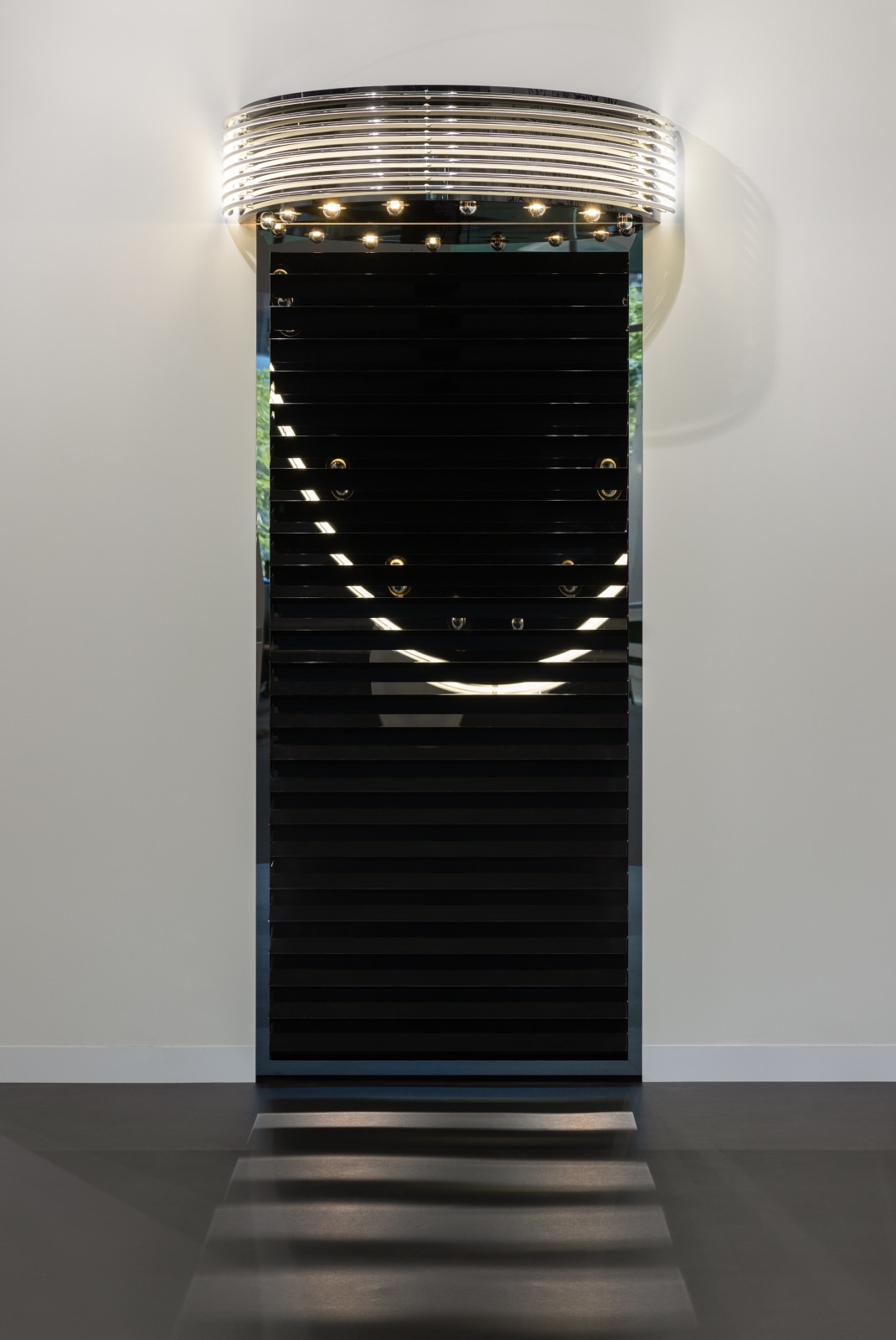
| Philippe Parreno, Marquee, 2018-2022, black Plexiglas, 8 light bulbs, 8 white neon tubes, converters, sockets, DMX controlled dimmers and motorized PVD coated steel shutters265 x 130,7 x 54,8 cm (overall)
30 x 130,7 x 54,8 cm (11 3/4 x 51 1/8 x 21 1/4 in) (marquee)
232 x 107 x 25,8 cm (91 3/8 x 42 1/8 x 9 7/8 in) (shutters). Unique in a series. Photo © Andrea Rossetti | |
|
Philippe Parreno radically redefined the exhibition experience by taking it as a medium, placing its construction at the heart of his process. Exploring the possibilities of the exhibition as a coherent “object” rather than as a collection of individual works, it becomes a veritable open space, a format that differs on each occasion, and a frame for things to appear and disappear.
Philippe Parreno’s Marquee belongs to an ongoing body of work started in 2006 that consists of more than 50 existing marquees to date. The work consists of two parts: a Marquee installed above black motorized shutters. The Marquee is composed of a black Plexiglas corpus that is lit with 8 white neon tubes and 8 light bulbs. Below the Marquee, shutters made of galvanized steel with a black finish open and close according to a program designed by the artist. This choreography is in tune with the Marquee’s light animation; both are controlled by a DMX recorder.
Parreno’s Marquees are individual in their form, light effect and construction. The artist’s Marquees combine lighting techniques that are almost a thing of the past (such as incandescent bulbs and neon tubes) with modern acrylics that are milled, shaped and formed according to the latest fabrication methods. Marquees first appeared at the beginning of the 20th century. The glowing, flickering porch roofs in front of entrances to cinemas and theaters were announcing movie titles and names of actors.
The artist built his first Marquee on occasion of the exhibition Interior Cartoons at Esther Schipper in Berlin (2006). Parreno’s largest Marquee to date was installed inside the Turbine Hall at Tate Modern in London, on occasion of the artist’s 2016 Hyundai Commission: Anywhen.
|
|
|
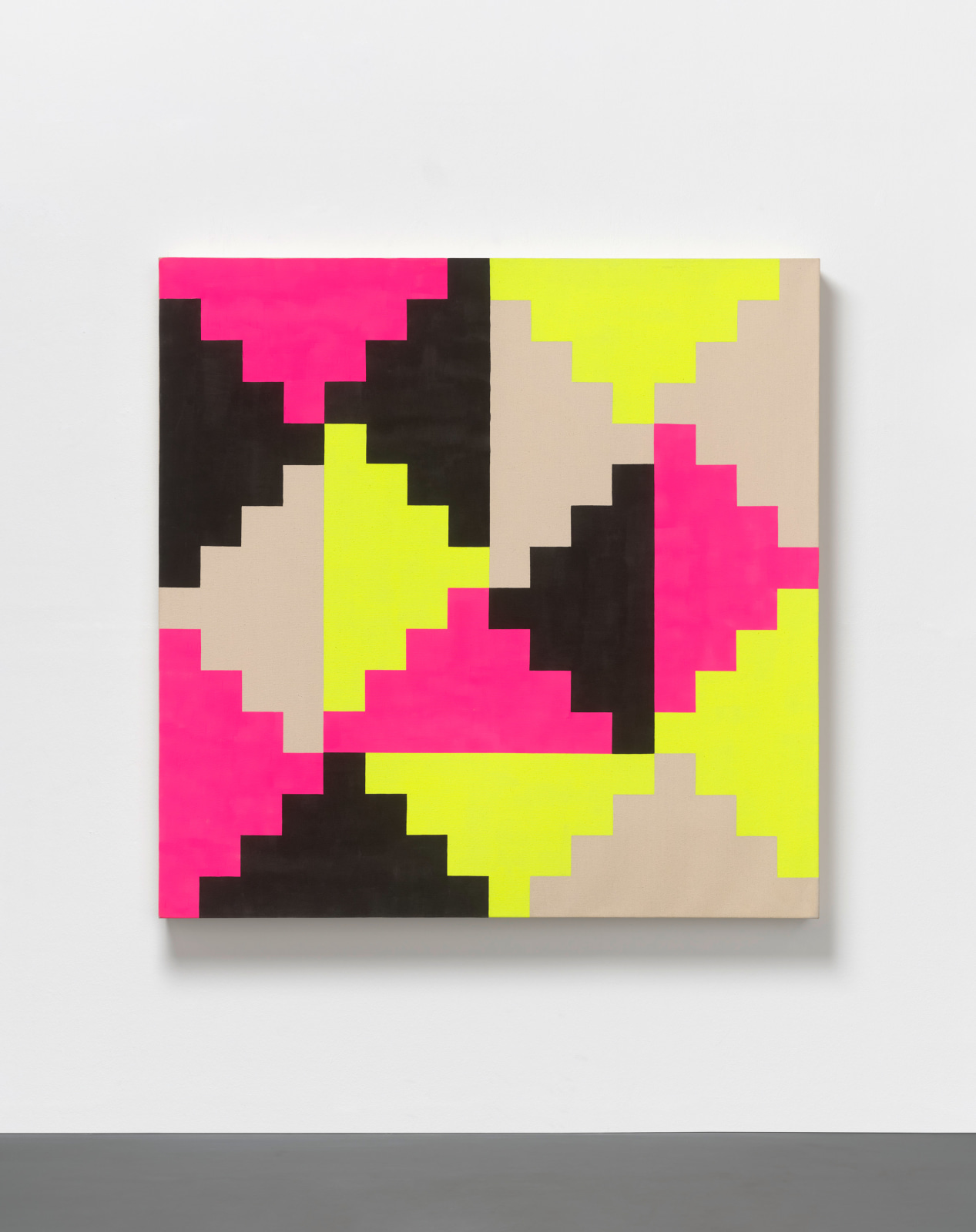
| General Idea, 1968 General Idea #6, 1986, fluorescent acrylic, latex on unprimed canvas152,4 x 152,4 x 10 cm. Photo © Jörg von Bruchhausen | |
|
Throughout its 25-year-long career, prominent Canadian artists’ group General Idea—formed in 1969 by AA Bronson (b. Michael Tims, 1946), Felix Partz (b. Ronald Gabe, 1945-1994) and Jorge Zontal (b. Slobodan Saia-Levi, 1944-1994)—produced an important body of work in various media and formats, which continues to be a reference point for generations of artists around the world.
In 1968 Felix Partz travelled to Europe and Tangiers, Morocco. Upon his return to Canada, Partz created a series of Ziggurat paintings (1968– 1969) inspired by the architecture and decorative patterns he had viewed on his travels, conjugated in a variety of bright colors on large canvases.
The ziggurat is a type of pyramidal stepped temple tower in ancient Mesopotamia, around 2000–500 BCE. The paintings’ formula is a precise arrangement of zigzags that fit together like puzzle pieces. The series was later appropriated into the oeuvre of General Idea. In 1986, the group decided to complete two more series from the original 1968 Ziggurat works. As AA Bronson explained: “We differentiated them from the earlier paintings by making the depth of the stretcher equal to one unit in the ziggurat. So, we made the ziggurats into three-dimensional elements. The paintings became architectural devices. We produced those in ‘86, as an homage to ‘68.” (Hans Ulrich Obrist in conversation with AA Bronson, in General Idea: Ziggurat, Mitchell-Innes & Nash, New York, 2017)
The ziggurat constitutes a key motif in General Idea’s oeuvre. From the early Ziggurat paintings to the architecture of The 1984 Miss General Idea Pageant Pavillion, the geometrical shape was appropriated by the group in most of their late 1960s–1970s series of works and became part of the iconography, alongside other such motifs as poodles, test tubes, and cornucopia.
|
|
|
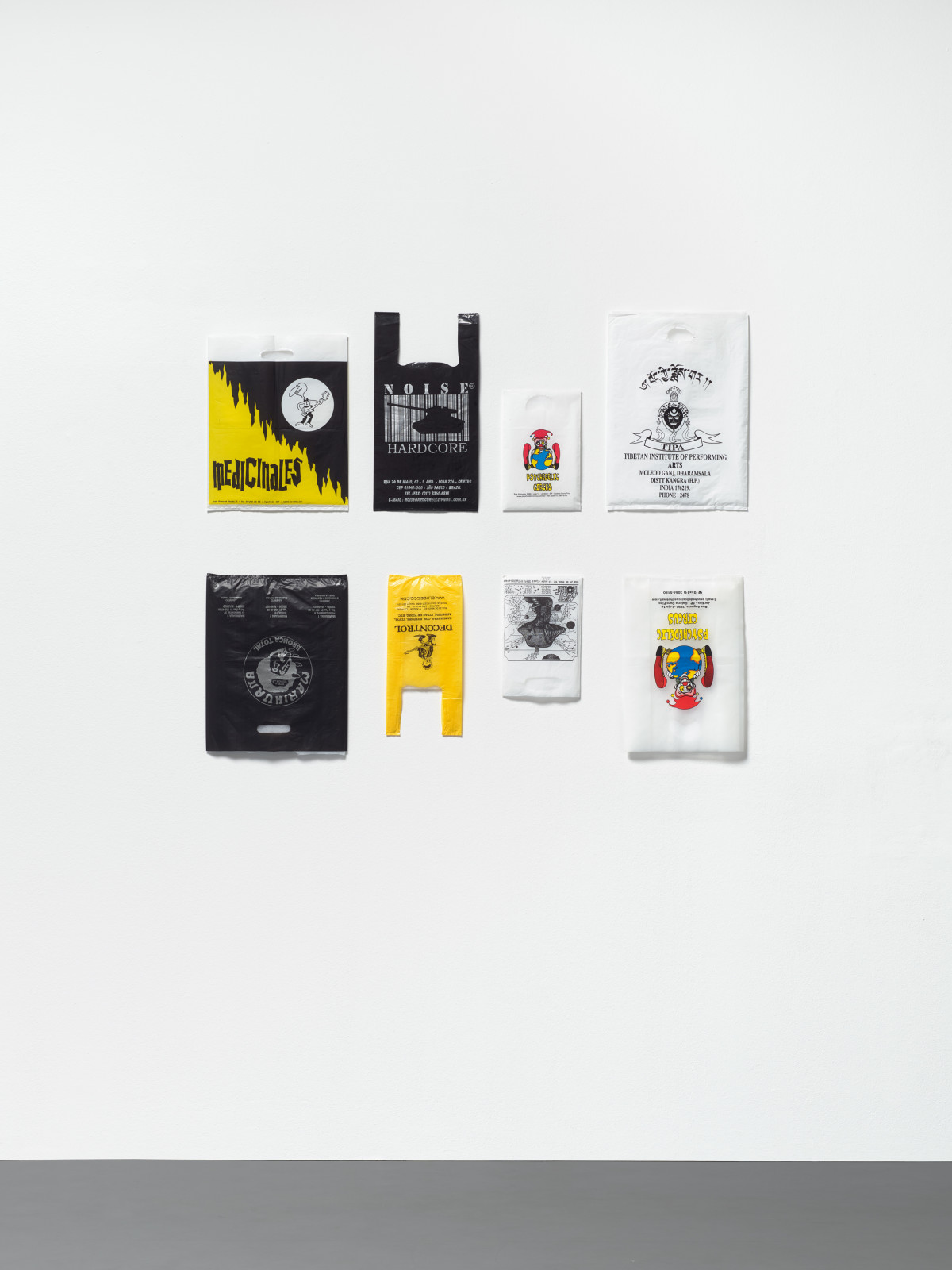
| Jac Leirner, Drugs and Religion, 1985-2022, set of 8 plastic bags, 110 x 135 cm. Photo © Jörg von Bruchhausen | |
|
The works of Jac Leirner are often created from mundane or formally unremarkable materials such as bank notes, blankets, cigarette paper, or water levels. Her large-scale installations recall the formal stricture of minimalist seriality and the evocative use of found materials characteristic of Arte Povera, while at the same time offering commentary on social codes.
Drugs & Religion consists of 8 vintage plastic bags. Here Jac Leirner obliquely and playfully acknowledges her history of addiction, a topic the artist has addressed openly in recent years. Yet, the pairing of bags from religious and drug contexts, is also evidence of an irreverence in the artist’s oeuvre which embraces the transgressive legacies of Dada, Constructivism, Pop and Conceptual Art, Arte Povera, and Punk.
The work has its their starting point in 1985, when the artist began collecting the bags before first exhibiting them at the 1989 São Paulo Biennial and the following year at the 44. Biennale di Venezia. At the time the central works of the series were presented as vast quilted surfaces, bag on bag, covering walls and in some instances also the floors. In addition, the artist produced sculptures from groups of slightly padded bags sewn-together. Later works, some with an exclusive focus on bags from art institutions were exhibited on the wall as grids, most recently, Museum Bags (1985/2019) at the Museum Ludwig, on occasion of the artist’s receiving the 2019 Wolfgang Hahn Award. |
|
|
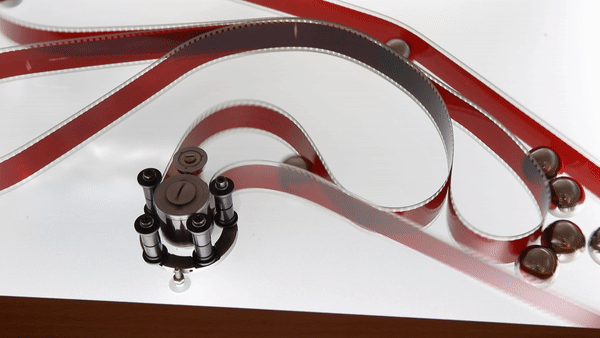
| Rosa Barba, Stellar Populations, 2017/2022, 35 mm film, light box, motor, stainless steel spheres12,8 x 86 x 60 cm. © Rosa Barba, VG Bild-Kunst, Bonn, 2022 Find out more about this work here
| |
|
Rosa Barba engages within the medium of film through a sculptural approach. In her works, Barba creates installations and site-specific interventions to analyze the ways film articulates space, placing the work and the viewer in a new relationship. Questions of composition, physicality of form and plasticity play an important role for the artist as Barba examines the industry of cinema and its staging vis-à-vis gesture, genre, information and documents. Her film works are situated between experimental documentary and fictional narrative.
Stellar Populations was specifically developed for Rosa Barba’s 2017 exhibition at the Secession in Vienna. The kinetic sculptural work shows a 35mm film strip meandering away inside a light box, driven by a motor. In the celluloid’s uncontrollable movements both an anarchic and playful element is manifest. |
|
|
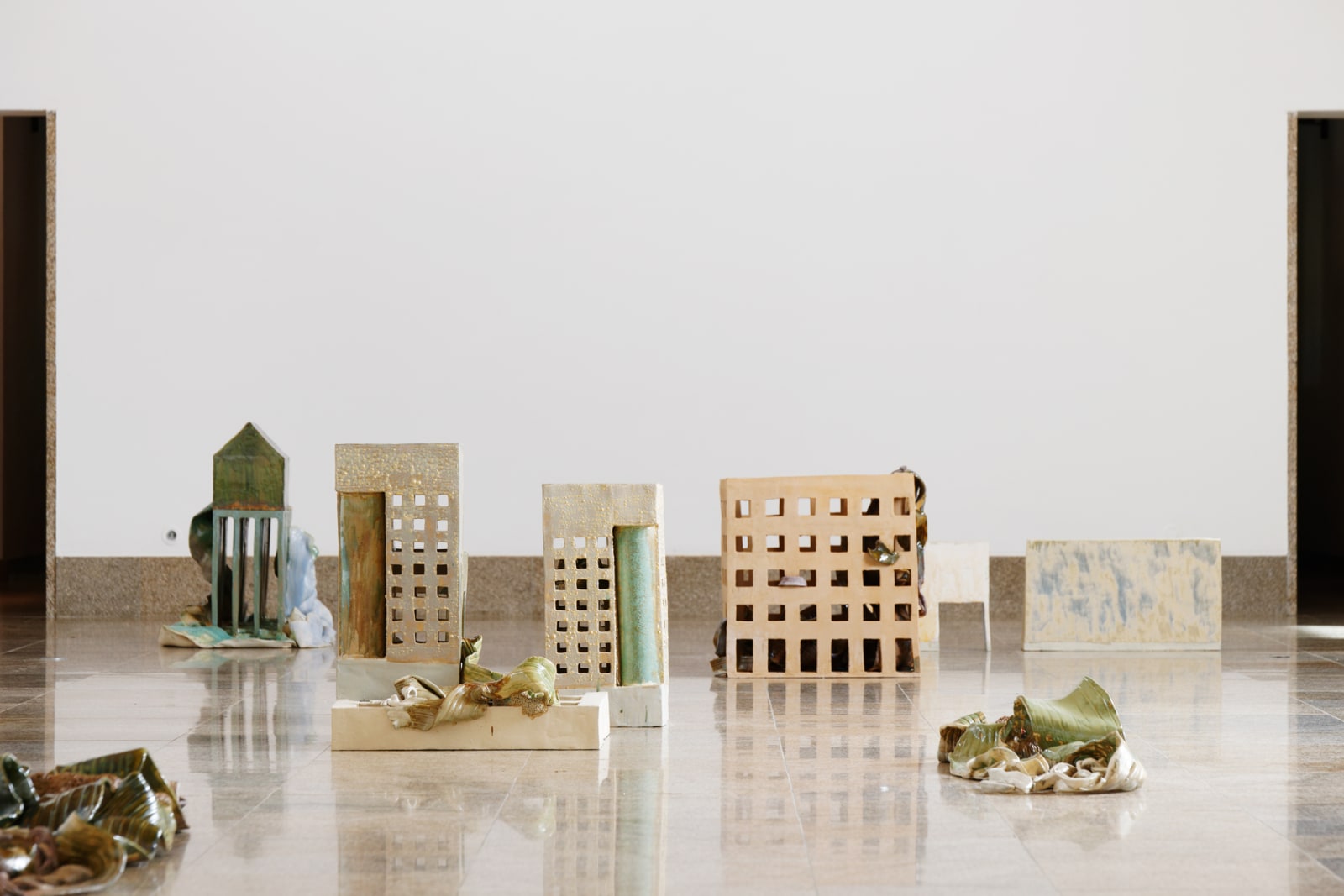
| Exhibition view: Isa Melsheimer, Concrete Bodies are Finite, Centre international d’art et du paysage, Vassivière Island, 2022. Photo: © Aurélien Mole
| |
|
Isa MelsheimerConcrete Bodies are Finite Centre international d'art et du paysage, Vassivière Island Though June 26, 2022 www.ciapiledevassiviere.comThis is the final weekend to visit Isa Melsheimer's solo exhibition Concrete Bodies are Finite at the Centre international d’art et du paysage, designed by Aldo Rossi and Xavier Fabre, which explores the architectural and cultural legacies of postmodernism through newly commissioned sculptures, textile works and installations that merge the organic and inorganic across singular forms. In a new series of large-scale ceramic works, Melsheimer draws inspiration from the plant Welwitschia mirabilis, which grows in the Namib desert of Namibia and Angola. Named after the first European to describe the plant in 1859, Welwitschia is inscribed within a legacy of 18th- and 19th-century European expeditions in which plant specimens were collected, taxonomized and added to botanical collections. In the case of Welwitschia, a double claiming thus occurred—of the plant itself and the right to name it. Melsheimer’s pieces depict Welwitschia-like forms that gradually merge with architectural elements. With their tentacular leaves interweaving and gradually engulfing the built forms, the plants appear to merge with the architecture, perhaps enacting their own organizational principles and right to claim. The ensemble of works in the exhibition suggests a reckoning with the legacies of modernism, as well as a recalibration of human relationships with the environment. Plants and other non-human species are shown to have their own potential for agency. |
|
|
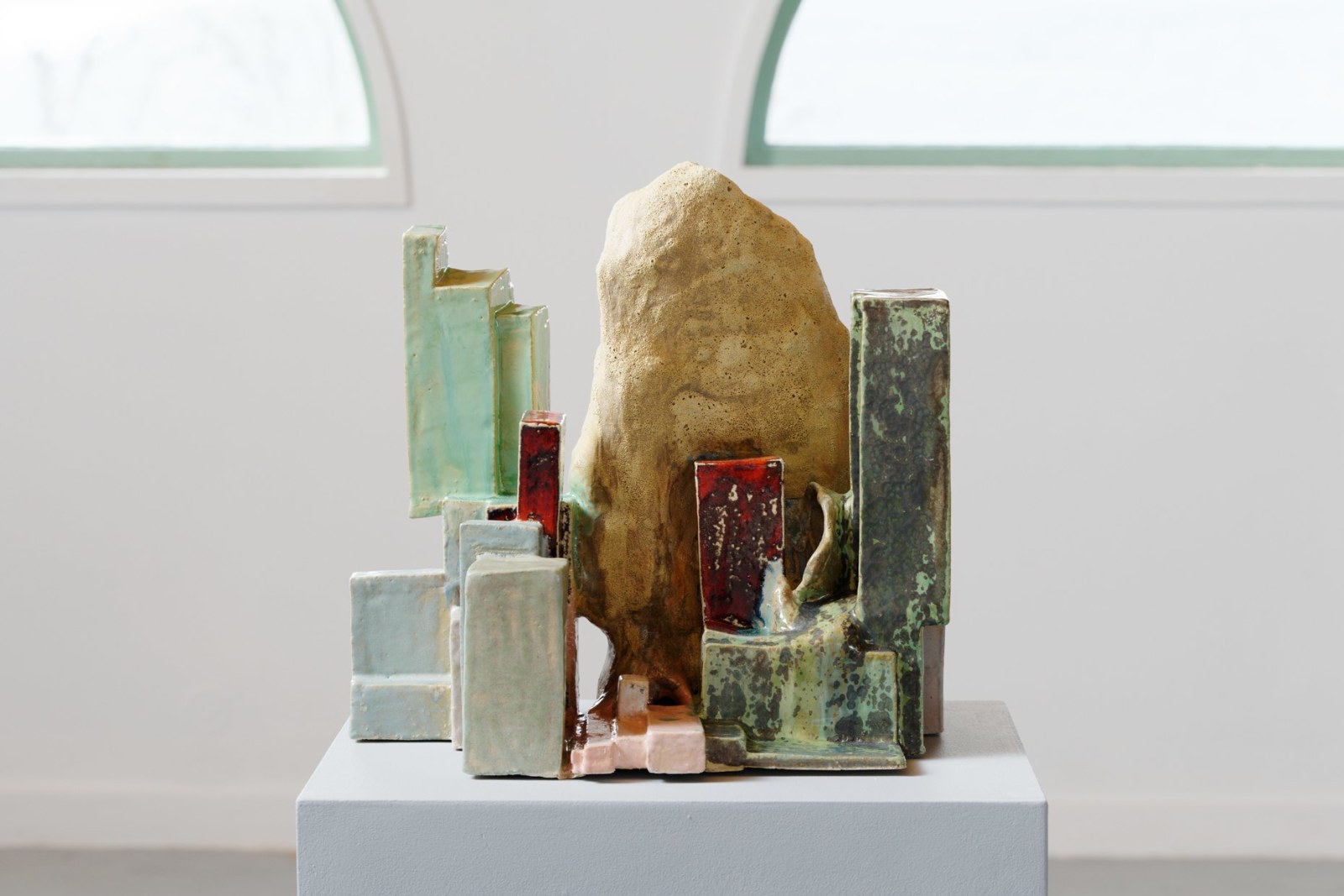
| Exhibition view: Isa Melsheimer, Concrete Bodies are Finite, Centre international d’art et du paysage, Vassivière Island, 2022. Photo: © Aurélien Mole
| |
|
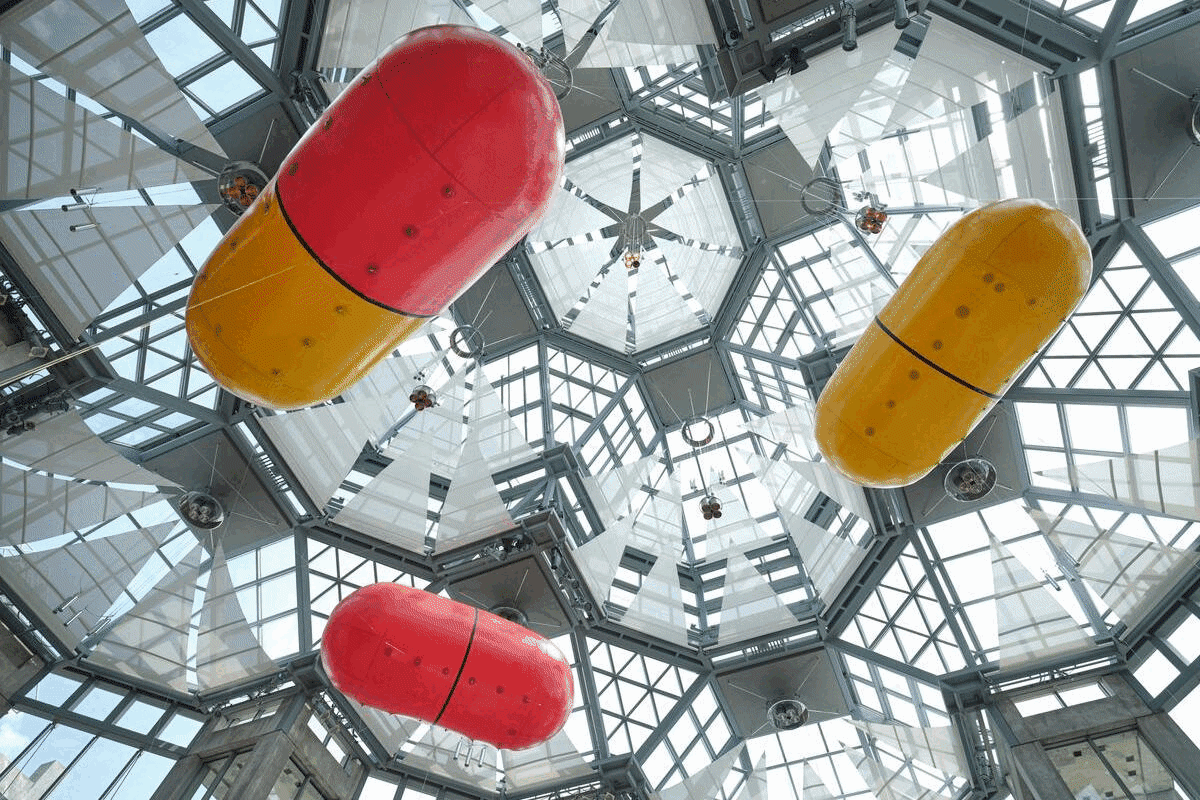
| Exhibition views: General Idea, National Gallery of Canada, Ottawa, 2022. © General Idea. Photos: NGC | |
|
General IdeaNational Gallery of Canada (NGC) 380 Sussex Drive Ottawa Through November 20, 2022 www.gallery.caEarlier this month, the most comprehensive retrospective exhibition of General Idea to date opened at the National Gallery of Canada (NGC). Formed as part of 1960s counterculture, General Idea was a radical artist group founded in Toronto by AA Bronson (b. 1946), Felix Partz (1945–1994) and Jorge Zontal (1944–1994). Together they invented a ground-breaking and provocative multi-disciplinary practice that challenged social and artistic norms, and altered the development of postwar art over the course of 25 years – from the group’s formation in 1969 to the deaths in 1994 of both Partz and Zontal from AIDS-related illnesses. This major retrospective of General Idea brings together more than 200 works, including installations, painting, drawing, video, sculpture, publications and archival material, to explore the crucial role General Idea played in the development of art and activism in Canada, the United States and Europe. The exhibition charts General Idea’s influence on future generations of creators, informing new ways of reimagining and changing our world through art.
|
|
|
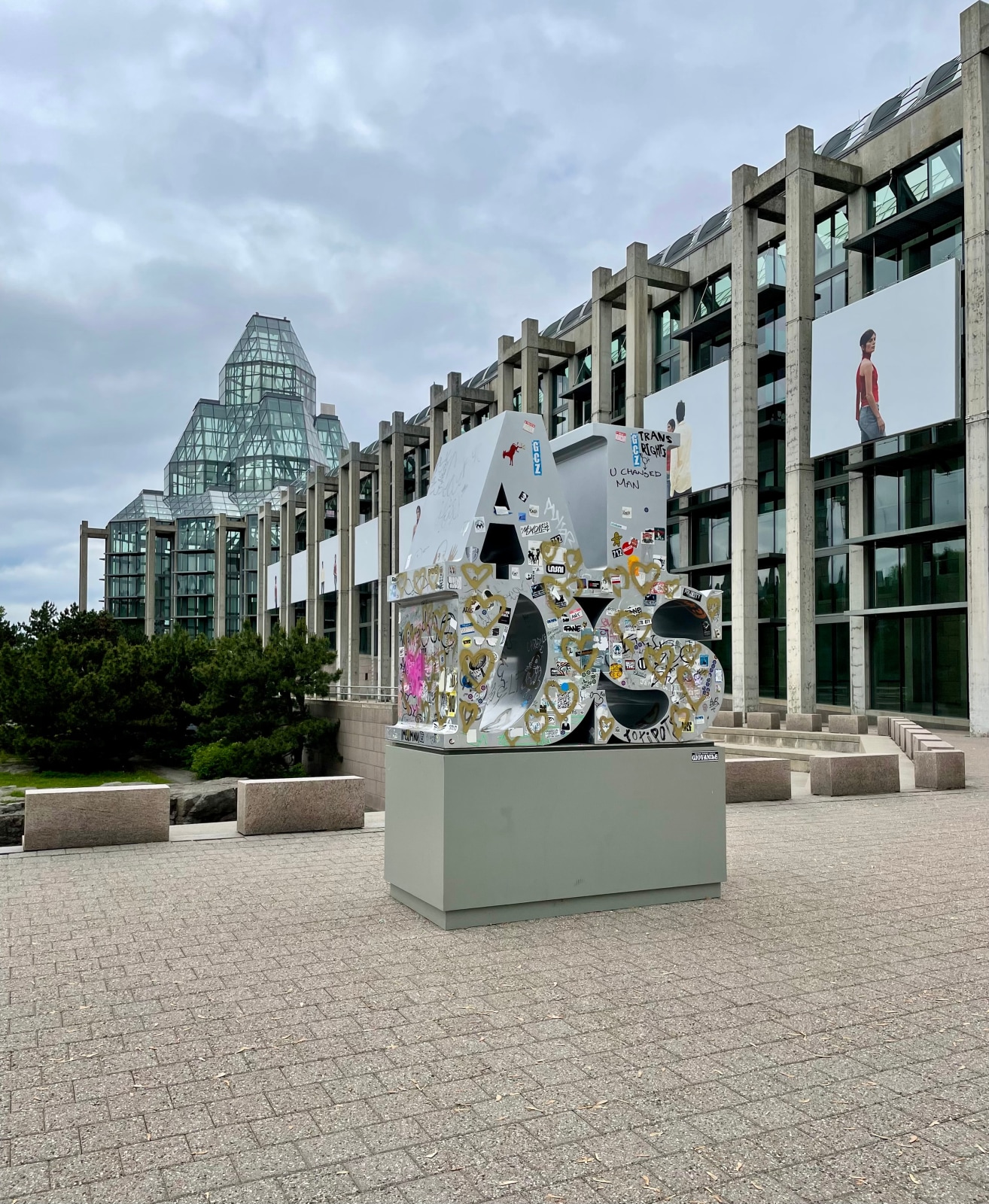
|
General Idea, AIDS, 1989, powder coated metal (steel), additions of stickers, felt pen and assorted items added by the public, 201 x 198.8 x 100.5 cm, (base: 100 x 200 x 100 cm). Installed outside the National Gallery of Canada in Ottawa. Photo © AA Bronson
| |
|
Known for their anti-establishment ethos and their early involvement in punk, queer theory and AIDS activism, General Idea critiqued consumer culture and social inequities in their work, examining mass media, the art economy, queer identity and the AIDS crisis. Organized chronologically, the exhibition examines General Idea’s total approach to art-making, showing they were artists, performers, architects, publishers, shopkeepers, anthropologists and more.
The exhibition is curated by Adam Welch, Ph.D., Associate Curator of Canadian Art, NGC, with the close collaboration of AA Bronson.
The museum is making available a number of digital resources on their website. Among them images of art works, accounts from the members of the group and fiends, colleagues and scholars, audio guides and a selection of historic videos by General Idea.
This exhibition will tour to the Stedelijk Museum, Amsterdam and another European venue in 2023. |
|
|
The National Gallery of Canada has made available several ground-breaking early films on a website dedicated to General Idea: www.generalideatv.com As they write: Long before YouTube and TikTok, General Idea were pioneers of video art. As early as 1969, they began experimenting with 16mm film, before turning to video – then a new technology. Video proved an ideal medium as the artists sought to understand, appropriate, and critique television. Mass media, popular culture, and the art world are common subjects in their video works – often involving satire as an artistic and political strategy. Crucially, General Idea’s videos appeared not only in museums and galleries but on broadcast television, airing on public-access channels from Toronto to Amsterdam.
|
|
|

| General Idea, Shut the Fuck Up, 1984, 14 min, color, sound. © General Idea Watch General Idea videos at www.generalideatv.com
| |
|
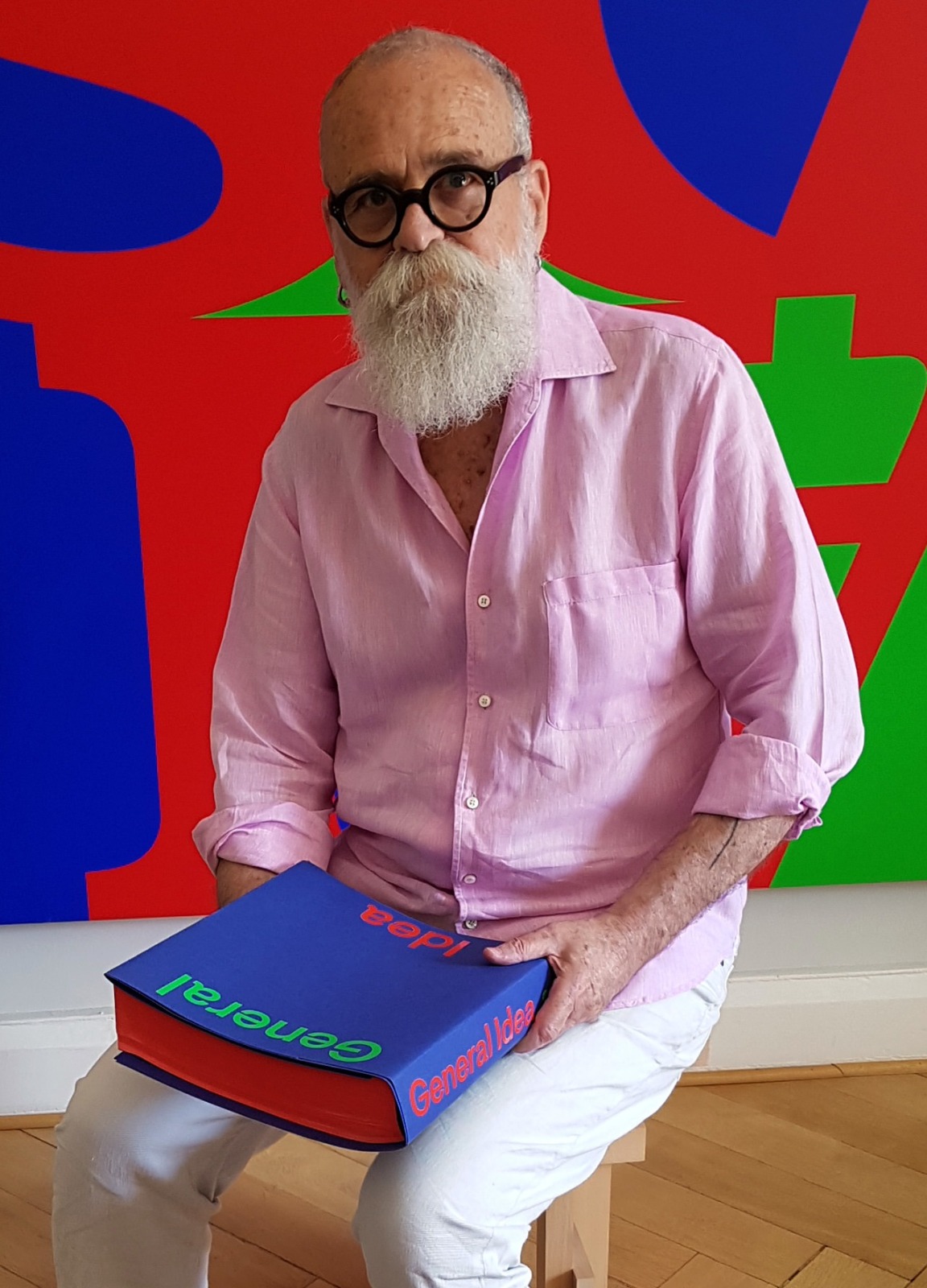
| AA Bronson in his Berlin apartment holding a copy of the General Idea catalogue and with General Idea, Great AIDS (Cadmium Red Light), 1990/2018 in the background.
Photo © Mark Jan Krayenhoff van de Leur. | |
|
The exhibition is accompanied by a major new publication which will stand as the definitive resource on General Idea. The catalogue was edited by Adam Welch and includes contributions by Contributors: David Balzer, AA Bronson, Diedrich Diederichsen, Dominic Johnson, Theodore Kerr, Alex Kitnick, Sholem Krishtalka, Élisabeth Lebovici, Philip Monk, Diana Nemiroff, Beatrix Ruf Contributors: David Balzer, AA Bronson, Diedrich Diederichsen, Dominic Johnson, Theodore Kerr, Alex Kitnick, Sholem Krishtalka, Élisabeth Lebovici, Philip Monk, Diana Nemiroff, Beatrix Ruf. Click here to order the catalogue.
|
|
|
During Pride month, the National Arts Centre will feature AA Bronson + General Idea, VideoVirus on the Kipnes Lantern to coincide with the National Gallery of Canada’s GENERAL IDEA exhibit.
Every hour between 6-11pm until June 30 (except June 21st), see VideoVirus on the Kipnes Lantern, National Arts Centre, 1 Elgin Street, Ottawa.
Watch here
|
|
|
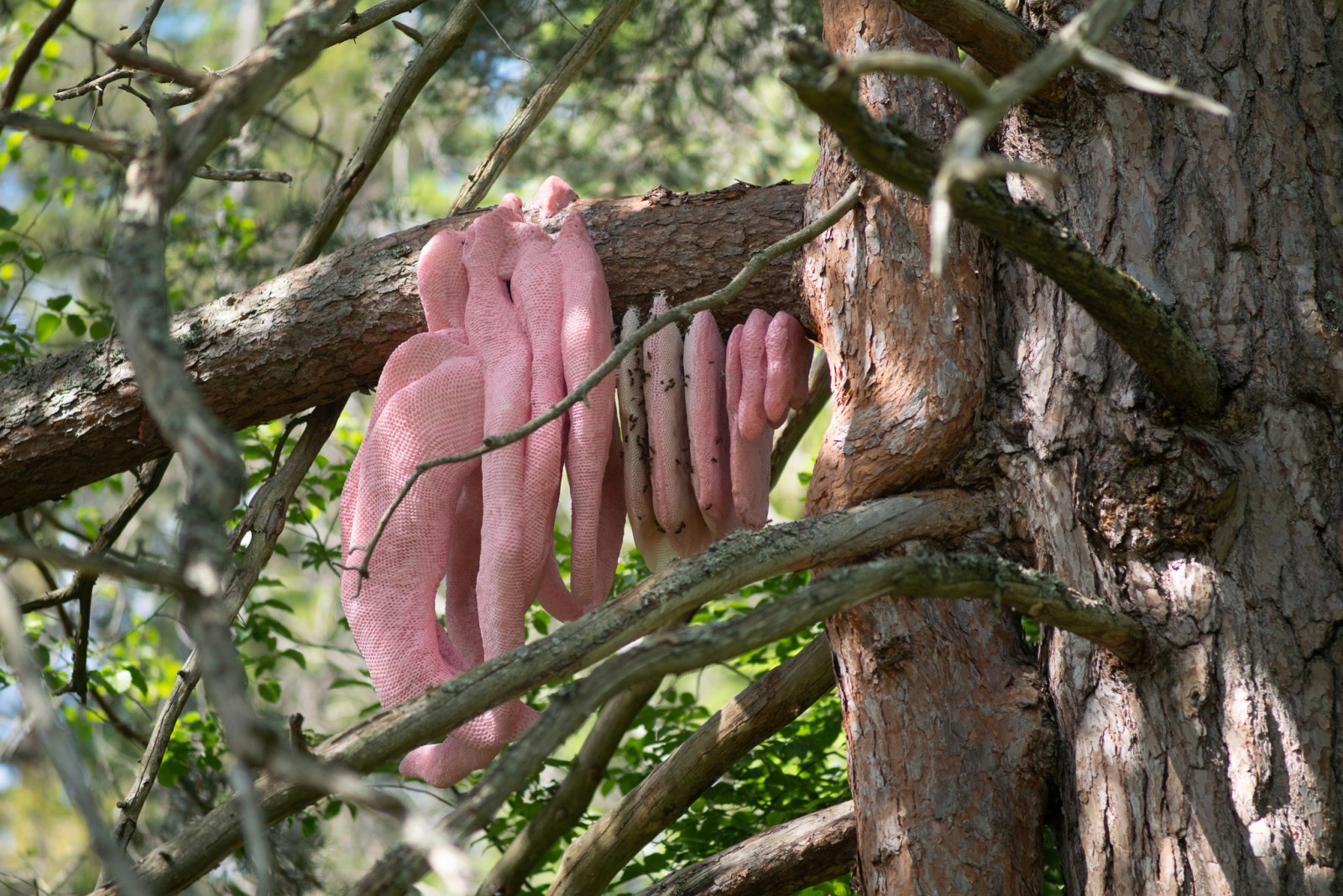
| Pierre Huyghe, Variants, 2021 - ongoing
Scanned forest, real-time simulation, generative mutations and sounds, intelligent camera, environmental sensors, animals, plants, micro-organisms and materialized mutations: synthetic and biological material aggregate.
Photo: Ola Rindal. © Pierre Huyghe | |
|
Pierre Huyghe
VariantsKistefos Samsmoveien 41 Jevnaker www.kistefosmuseum.comPierre Huyghe, Variants, a new site-specific work was unveiled at Kistefos last weekend. Variants is a multipolar entity that perceives, generates and modifies. It is simultaneously an island and what that island could be in an alternate reality. The island has been scanned to become the environment of a live simulation. The two milieux, physical and digital, are permeable. A fictional narrative gives a set of rules and prompts, played out by an artificial neural network that generates unpredictable mutations in the simulation, of what is present on the island, animate or inanimate, sounds or things, such as trees, trash, animals, or humans.
|
|
|
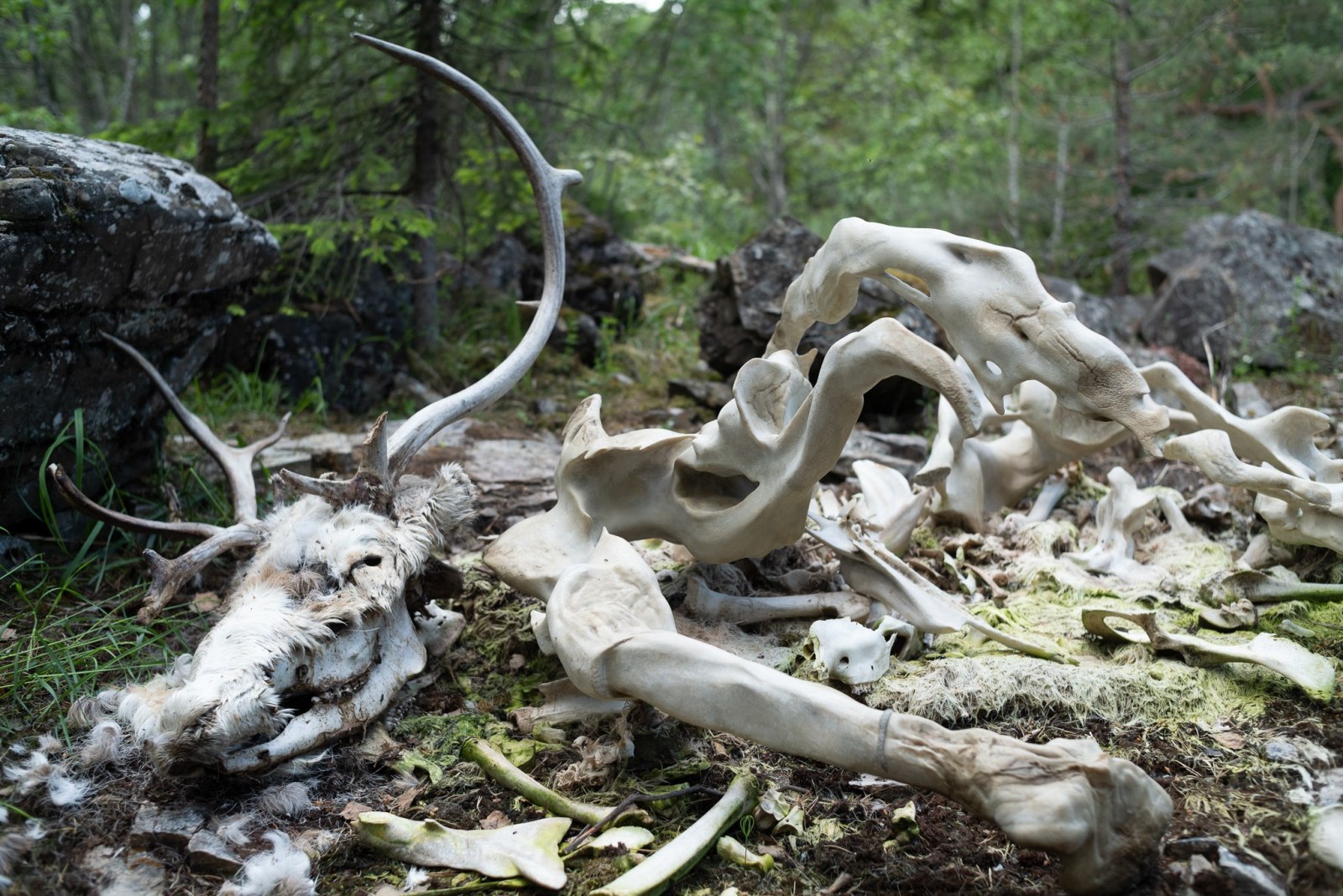
| Pierre Huyghe, Variants, 2021 - ongoing
Scanned forest, real-time simulation, generative mutations and sounds, intelligent camera, environmental sensors, animals, plants, micro-organisms and materialized mutations: synthetic and biological material aggregate.
Photo: Ola Rindal. © Pierre Huyghe
| |
|
As contingent and fluctuant events occur within the island, in its geochemical or biological activity, the generated mutations change behavior in real time and the recurring floodwater accelerates their growth. The intelligences hosted by the spectral space are in an unresolved sympoiesis and permanent crisis.
Occasionally, mutations exit the simulation and manifest physically on the island where they sustain or decay, contaminating the existing reality with an unknown possibility of itself, progressively modifying the island’s appearance.
A path cutting through the island leads to a screen where the simulated environment is navigated by an autonomous and anxious eye, witnessing the island’s ever-changing nature.
As the flood submerges the island, it becomes inaccessible. But whether immersive or impenetrable, the indifferent entity continues.
Scanned forest, real-time simulation, generative mutations and sounds, intelligent camera, environmental sensors, animals, plants, micro-organisms and materialized mutations: synthetic and biological material aggregate.
|
|
|
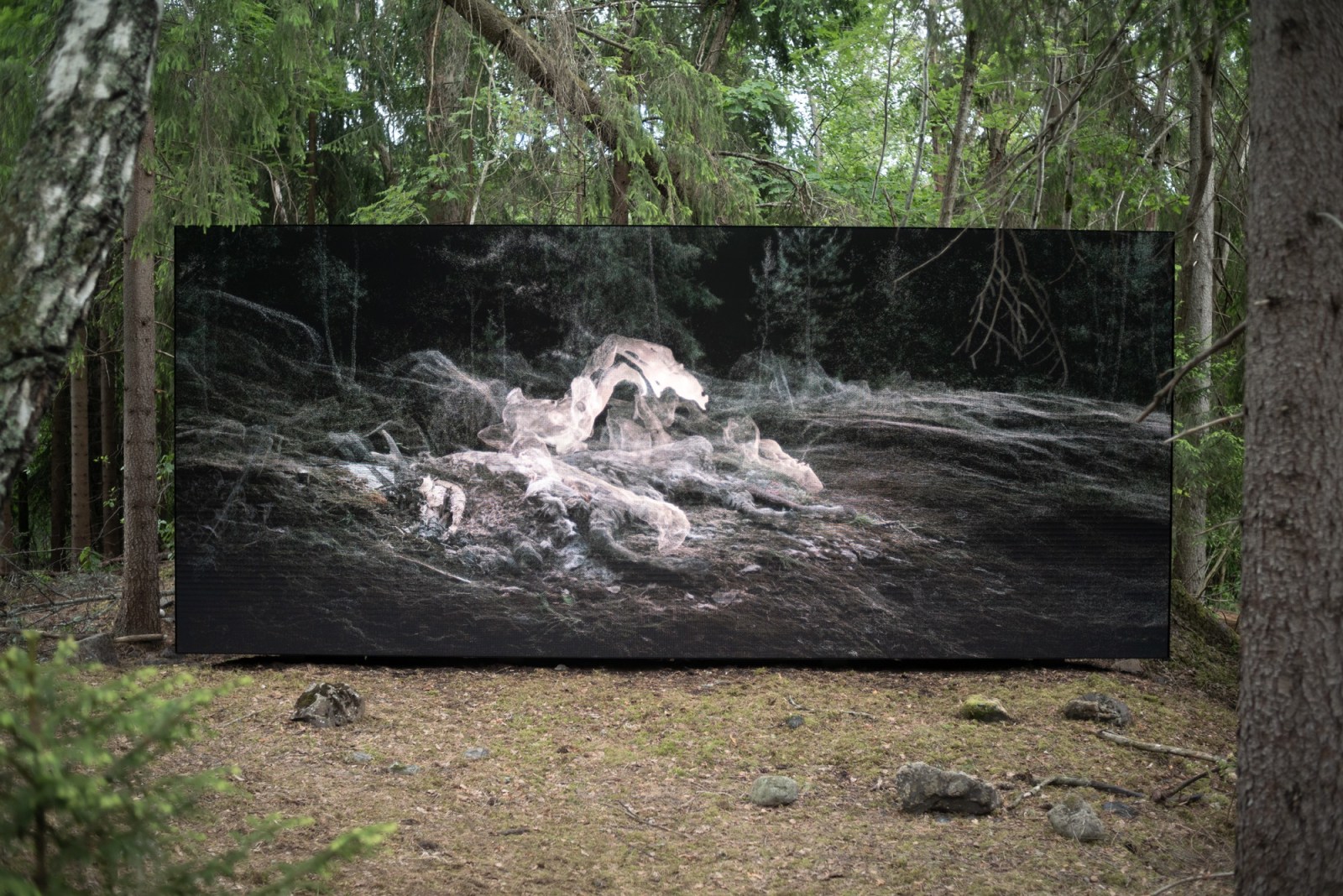
| Pierre Huyghe, Variants, 2021 - ongoing
Scanned forest, real-time simulation, generative mutations and sounds, intelligent camera, environmental sensors, animals, plants, micro-organisms and materialized mutations: synthetic and biological material aggregate.
Photo: Ola Rindal. © Pierre Huyghe | |
|
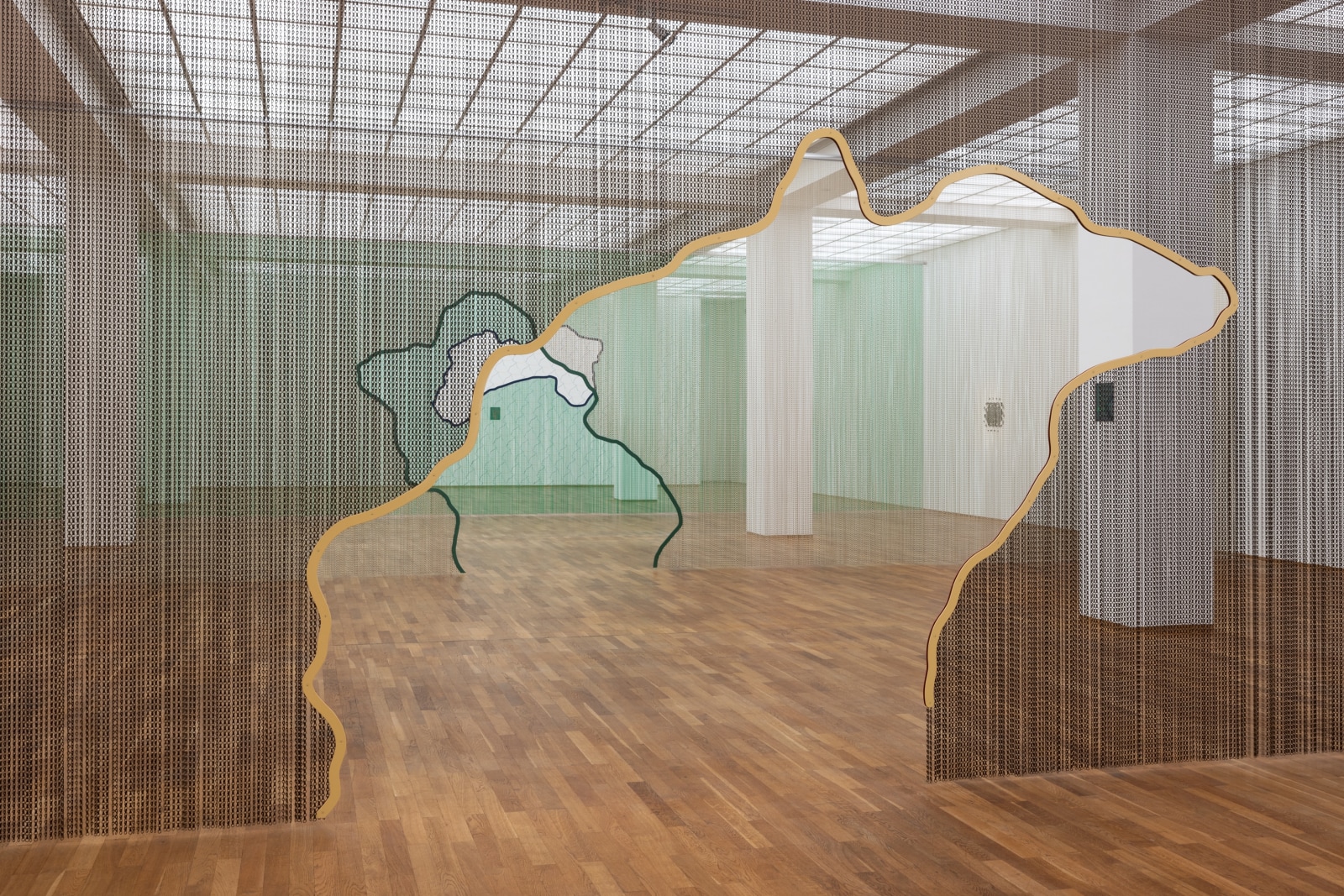
| Daniel Steegmann Mangrané, ⊮, 2022, Kriska aluminium curtain, aluminium rail, powder-coated steel frames, 3,95 x 15 m (each, 3 parts).
Exhibition view: Under Construction, Hamburger Bahnhof - Museum für Gegenwart, Berlin, 2022, Nationalgalerie - Staatliche Museen zu Berlin, 2022 © Andrea Rossetti | |
|
Under ConstructionNew Acquisitions for the Nationalgalerie’s Collection With Ceal Floyer and Daniel Steegmann MangranéHamburger Bahnhof Invalidenstraße 50-51 10557 Berlin Through January 15, 2023 www.smb.museumwww.underconstructioninberlin.deAt the Hamburger Bahnhof the group exhibition Under Construction presents the latest additions to the Nationalgalerie collection, including works by Ceal Floyer and Daniel Steegmann Mangrané. Ever since the institution was founded in 1861, the collection of the Nationalgalerie has continually been expanded to include contemporary works from each passing era. The collection has been “under reconstruction” since the exhibition and research project Hello World: Revising a Collection (2018), which reflected on the political and cultural ramifications of the Nationalgalerie’s approach to collecting, and called for non-Western art movements and transcultural approaches to be incorporated into the museum’s practices and collections. In a presentation of selected new acquisitions, the Hamburger Bahnhof – Museum für Gegenwart – Berlin is showing works by international artists in various media, including painting, installation, sculpture, video and works on paper. For the exhibition Daniel Steegmann Mangrané has created a large curtain work consisting of three separate sections, that are placed closely together, oscillating between appearing as a diaphanous screen and semi-solid object, existing in a hybrid state between corporeality and immateriality. Additionally, the artist has conceived the whole space in which the curtains are on view, selecting and placing other works of his as well as a historical work from the collection in a way that creates multiple perspectives and connections with and through the curtains. |
|
|
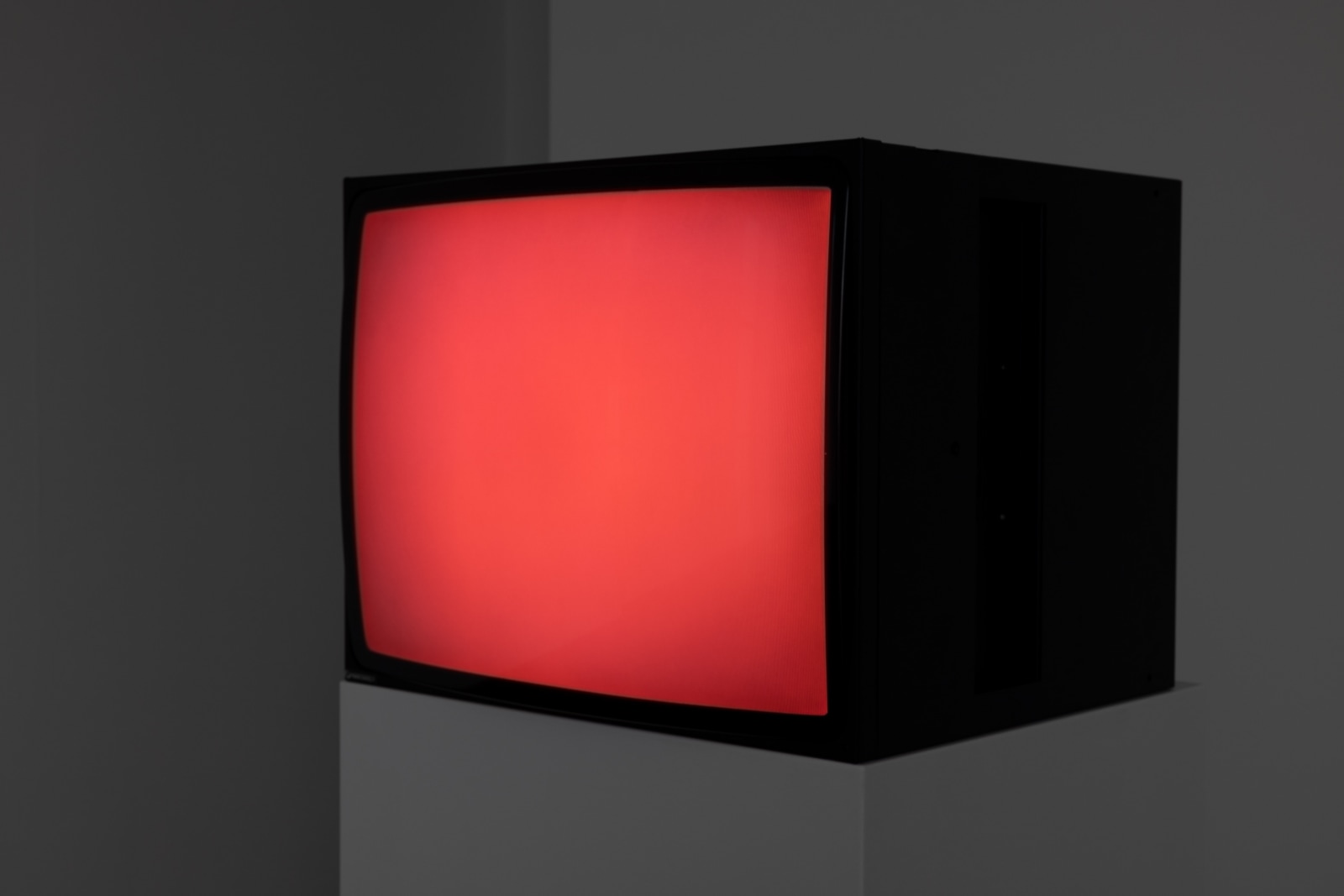
| Ceal Floyer, Watercolour, 2004, monitor-based DVD, duration: 1:09 min (loop).
Exhibition view: Under Construction, Hamburger Bahnhof - Museum für Gegenwart, Berlin, 2022, Nationalgalerie - Staatliche Museen zu Berlin, 2022. Photo © Andrea Rossetti | |
|
On view will be three works from Ceal Floyer, two works that play on our expectations of what we may encounter in an exhibition space and also on our notion of what an art work is – Peel, 2003, a soundless video projection where empty white walls raise the expectation that objects will be shown, and Projection, 1997, a slide projector that projects a roughly rectangular field of light, as if the slide were empty, yet on closer inspection one notices the image of a nail. The third work in the exhibition from Floyer, Watercolour, 2004, (pictured above) consists of a monitor showing a white screen which turns blue, then green, then red; the alterations of colour corresponding to the chromatic make-up of video technology. But like an aural mnemonic, the subtle ‘plink, plink’ of the soundtrack gently coaches the realization that what is being shown is a close up of a glass of water with a brush being cleaned.
|
|
|
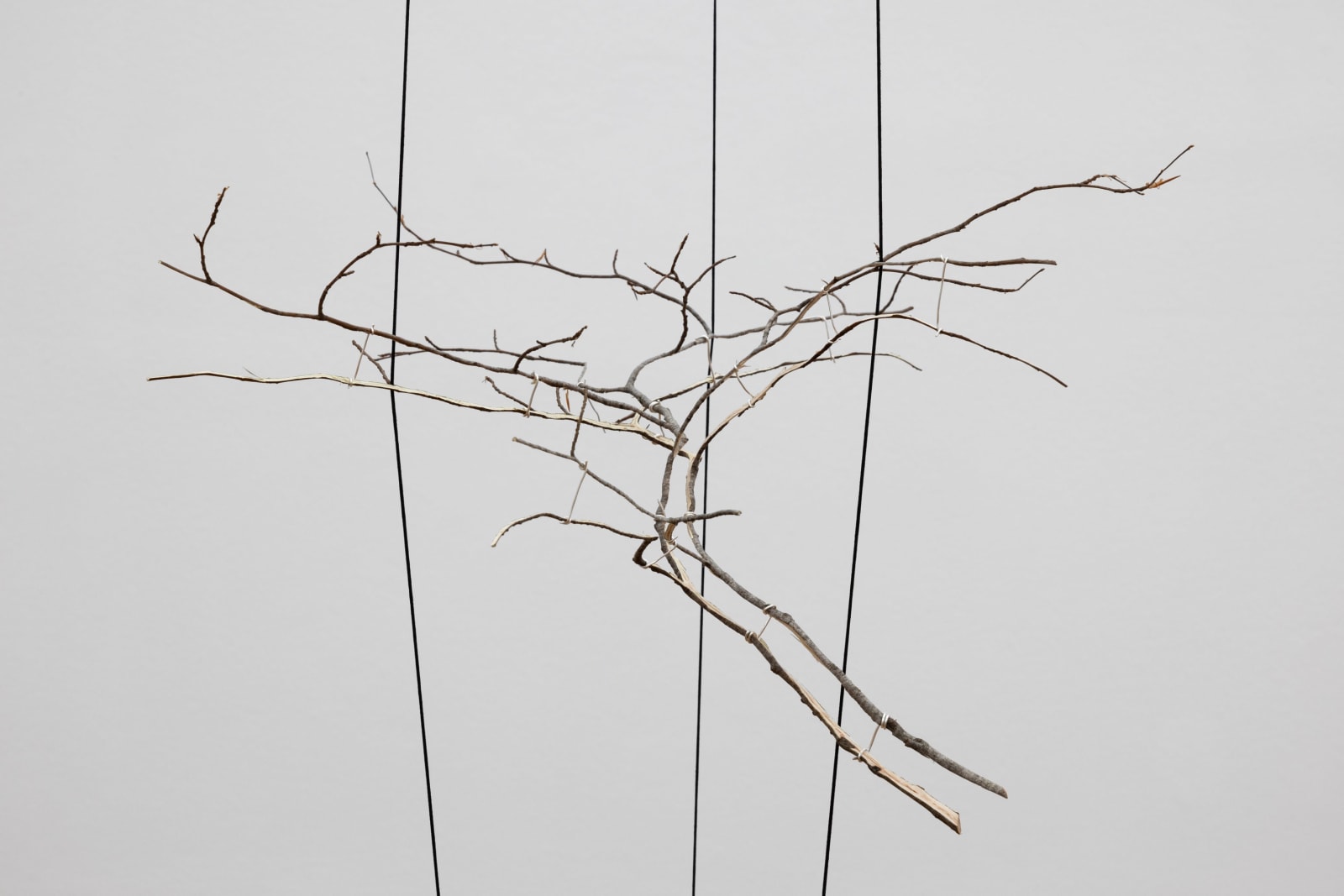
| Daniel Steegmann Mangrané, Geometric Nature/Biology, 2022. Split beech branch, elastic cords, 15 x 58 x 42 cm (branch), overall dimensions variable. Exhibition view: Under Construction, Hamburger Bahnhof - Museum für Gegenwart, Berlin, 2022, Nationalgalerie - Staatliche Museen zu Berlin, 2022. Photo © Andrea Rossetti | |
|
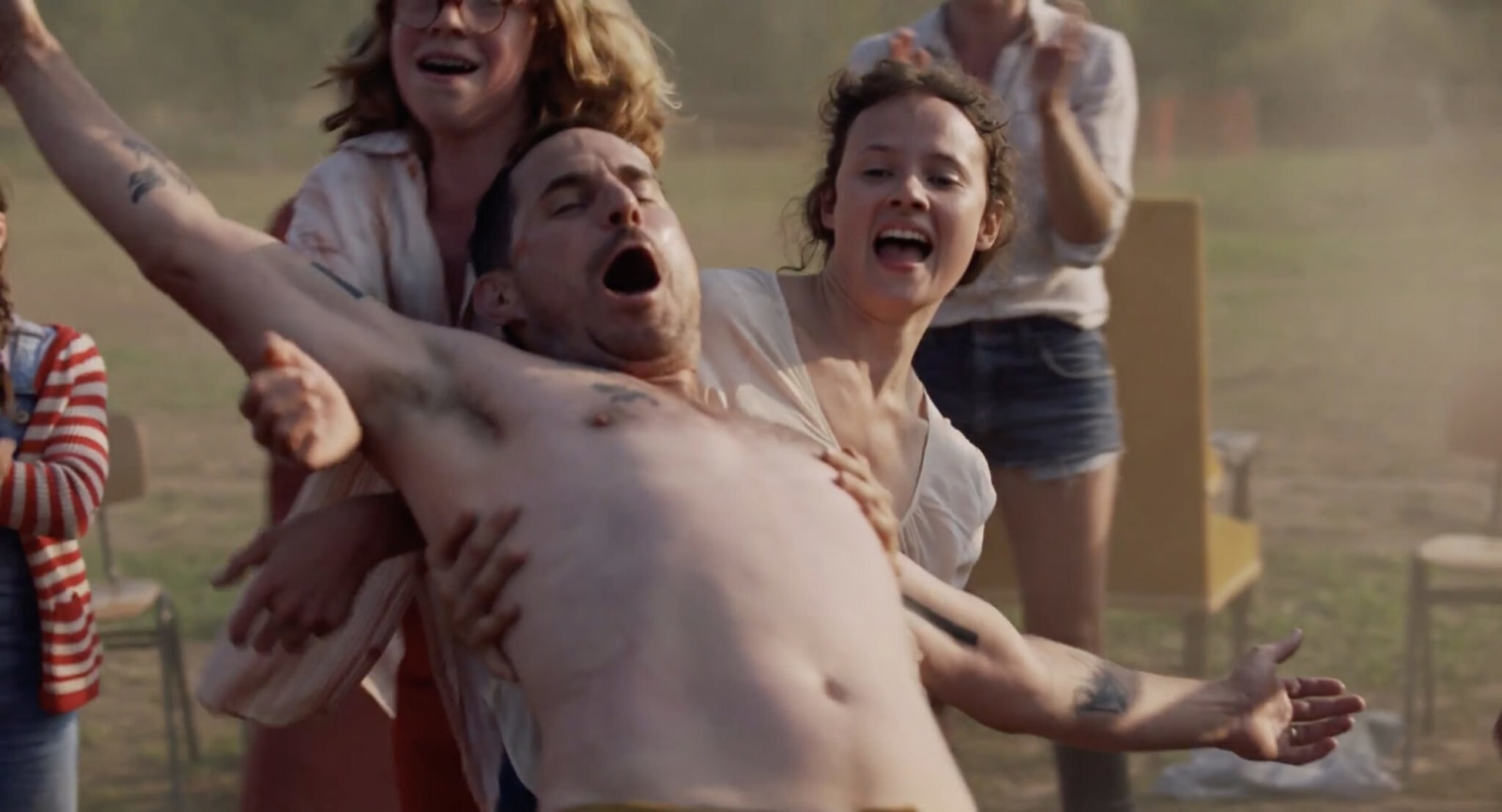
| Film still: Servus Papa, See You in Hell, 2022 directed by Christopher Roth. Still © Port au Prince Pictures / Lydia Richter | |
|
Servus Papa, See you in HellDirector: Christopher Roth Writers: Jeanne Tremsal, Christopher Roth Cast: Jana McKinnon, Clemens Schick, Leo Altaras, Dirk von Lotzow, and more. Production: Arden Film, in Koproduktion mit dem Hessischen Rundfunk und Arte Distribution Germany: Port au Prince Pictures Language: German (English Subtitles) Christopher Roth's Servus Papa, See you in Hell will premiere at FILMFEST MÜNCHEN, from June 25. The feature-length film tells the story of Jeanne, who has lived in the commune on the farm since she was two years old. Her parents live in city communes and rarely visit – just one of the commune’s rules installed by Otto, the ruler of the commune: Children grow up without parents. 14-year-old Jeanne knows no other world, she enjoys her life surrounded by many other children in the great outdoors – until she falls in love with 16-year-old Jean and her childhood paradise starts to crack. Ultimately, she violates Otto’s supreme law: “Sex is allowed, but love is forbidden.” Screening dates: June 25 – 27 & July 2, 2022 – tickets via FILMFEST MÜNCHEN website.
|
|
|
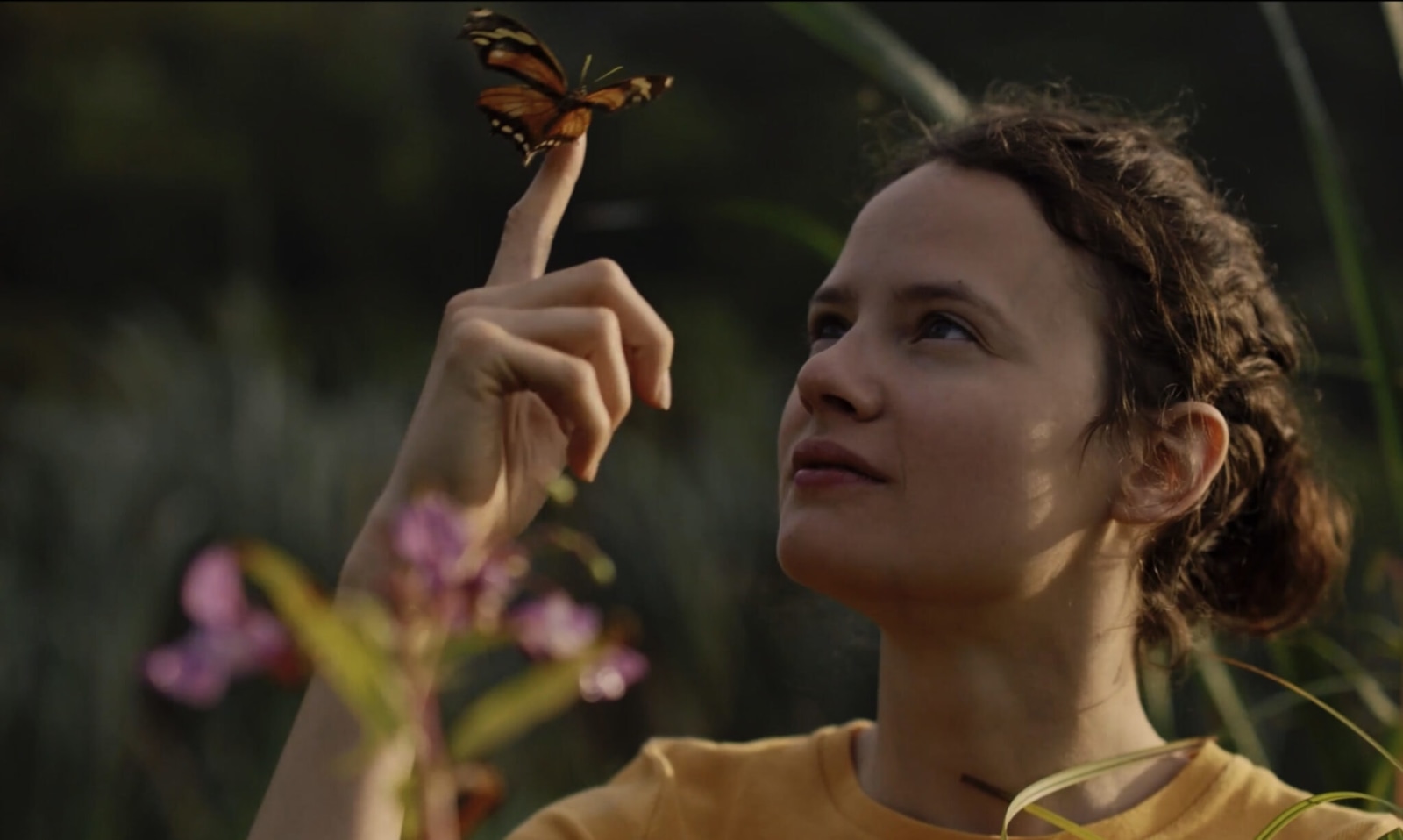
| Film still: Servus Papa, See You in Hell, 2022 directed by Christopher Roth. Still © Port au Prince Pictures / Lydia Richter
| |
|
Karin Sander
A–Z
2019
Publisher: Walther König
Language: English, German
Available here
|
|
Karin Sander
Skulptur / Sculpture / Scultura
2020
Publisher: Verlag der Buchhandlung Walther König
Languages: Italian, English, German
Available here
|
|
Karin Sander
Gebrauchsbilder
WIth Contributions by Harald Welzer, John Waters, Hubertus Butin, Konrad Bitterli, Roland Wäspe
2011
Hardcover
Publisher: Moderne Kunst Nürnberg
Language: English, German
Available here
|
|
Nathan Carter
THE GALE FORCE PRECISION DIRIGIBLE FLYING FACTION IN ACTION
Nathan Carter, Paul Elliman, Cay Sophie Rabinowitz
2006
Publisher: Esther Schipper
Language: English
Available here
|
|
Nathan Carter
CLANDESTINE RADIOS and CONCEALED KITCHENS
2010
Publisher: onestar press
Language: English
Available here
|
|
Nathan Carter
The Final Run-iNs ONE! TWO!! THREE!!! FOUR!!!!
Nathan Carterand Matthew Ronay
2008
Publisher: onestar press
Language: English
Available here
|
|
Isa Melsheimer
Kontrastbedürfnis
2015
Publisher: Verlag für moderne Kunst
Language: German, English
Available here
|
|
Rosa Barba
On the Anarchic Organization of Cinematic Spaces - Evoking Spaces Beyond Cinema
2021
Publisher: Hatje Cantz
Language: English
Available here
|
|
Pierre Huyghe
2019
Publisher: Serpentine Galleries, Koenig Books, Luma Foundation
Language: German, English
Available here
|
|
Daniel Steegmann Mangrané
The Spiral Forest
2018
Publisher: The Green Parrot and Mousse Publishing
Language: English
Available here
|
|
Ceal Floyer
A HANDBOOK
Texts by Mark Godfrey, Tacita Dean, Sergio Edelsztein, ed. Susanne Küper, 2015
Publisher: Hatje Cantz
Language: German, English
Available here
|
|
Christopher Roth
2038. The New Serenity
With contributions by Audrey Tang, Christopher Roth, Erica Love & João Enxuto, Erik Bordeleau, Evgeny Morozov, Hilary Mason, Jacob Eli Goldman, Jennifer Jacquet & Becca Franks, Joana Pope, Leif Randt, Ludwig Engel, Lukas Kubina, Mark Wigley, Meghan Rolvien, Michael Stoeppler, Mitch Joachim, Olaf Grawert, Suhail Malik, Tatiana Bilbao, terra0, and Tirdad Zolgahdr.
2021
Publisher: Sorry Press
Available here
|
|
|
ESTHER SCHIPPER
POTSDAMER STRASSE 81E
10785 BERLIN
|
|
|
|
|
